Kia Carnival review and buyer’s guide
If you have lots of kids, including twins or even triplets on the way, the Kia Carnival is the best possible family vehicle for you. It’s a smart, luxurious and highly practical workhorse that also offers excellent value.
The Kia Carnival is the ultimate family transport vehicle which is so good at completing those typical routine tasks a growing family needs, you’re forgiven for falling a bit in love with it.
You could be one of thousands of families out there squashing, cramping and folding themselves into their fashionable seven-seat SUV, when they should be using a Carnival for moving their three or more kids around with ease.
The Kia Carnival is better than an SUV, for most people, and in this report we’re going to explore exactly why.
While there aren’t many vehicles as capable and affordable as a Carnival, you’ll want to compare it with vehicles like the Hyundai Palisade (8-seater, large SUV), or the Hyundai Staria (people mover on a van platform).
In the context of what this vehicle claims to be, it’s a very faithful execution indeed. Except for one thing - this time around, the fourth Carnival, Kia has actually made it look pretty sexy. Something many of its potential customers probably don’t feel these days, folding endless washing and mashing potatoes en masse.
There are two powertrains in Kia Carnival, a V6 petrol and a 2.2-litre turbo-diesel, so you can figure out which powertrain is going to suit you best.
There are also four model grades with pricing ranging from about $50,000 to $70,000 - about the same as most seven-seat SUVs. So it’s not like you’re going to be forced into paying some substantial amount more just to make your life easier. This is not the case. Carnival is quite reasonably priced - we’ll get to that.
Carnival is not perfect, because no car is, so the purpose for bringing you the negatives, as as well as the positives is because this is a balanced report that legitimises the good with the bad. The things you might not ultimately like about the vehicle need to be considered against the overwhelming advantages of living with this vehicle - before you spend the big bucks.
So what is the primary motivation for considering a Carnival over a seven-seat SUV? Here’s a visual example:
Carnival is objectively better than an SUV in so many important ways - like accommodation, access, luggage space, versatility and convenience. Frankly, a lot of people who buy a typical seven-seat SUV would actually be better off in a Carnival - if for nothing else than to make for a more fuss-free day-to-day process.
Getting in and out, finding space for various stuff, minimising self-inflicted wear and tear on your new vehicle. Carnival is all about simplifying the complexities of your daily, weekly routine.
There’s a lot more to love than to hate about this vehicle, and none of the ‘hate’ items should be a deal-breaker for you, because they’re nuances, as opposed to outright inadequacies in design or execution.
You can download the full Kia Carnival spec sheet/brochure here >>
FEATURES & PRICING
Consider that the Kia Sorento, the Mazda CX-9 or the Toyota Kluger are all $50-70,000 vehicles these days. In this context, the Kia Carnival offers impeccable value given that it has better daily functionality - something you’ll benefit from every single time you use the vehicle.
Then you check out what the base model offers and it starts to make perfect sense why it’s the best-selling people mover in Australia, by a significant margin.
Let’s see what you get for you money, and then see what features you absolutely must have, or which ones you could afford, depending on your respective financial situation.
Carnival ‘S’ for $51,700 - $53,700 (approx. | before on-road costs) gets as standard:
17-inch alloys (space-saver spare), cloth seats w/ manual adjustment (6 ways driver, 4 ways pass.)
LED: headlights (auto dusk-sensing; escort function), daytime running lights and rear brake lights; auto high beam
Rear parking sensors, power folding & heated door mirrors, folding key remote (incl. keyless entry & tailgate release)
Adaptive cruise control, lane keeping, auto emergency braking, rear cross-traffic alert & collision avoidance
Curtain airbags in rows 2 & 3; driver knee airbag; safe exit warning
5 x ISOFix child restraint anchor points (w/ 5 top tether anchor points to match); maximum 8-seat capacity
6-speakers stereo system, 8-inch touchscreen, wireless Apple CarPlay & Android Auto
Driver & front passenger sunvisor extensions, row 2 & 3 AC vents
Carnival ‘Si’ for $57,400 - $59,400 (approx. | before on-road costs) adds:
18-inch alloy wheels (space-saver spare)
Front parking sensors, full LED taillights, auto window defog
leather steering wheel & transmission shifter knob
DAB radio + 8-speakers stereo system, satnav w/ 10 years traffic map updates
12.3-inch touchscreen w/ “Sounds of Nature” ambient audio
Wired Apple CarPlay & Android Auto (that’s not a typo - it’s a long story)
Dual-zone climate control (front), single-zone rear climate control
Carnival ‘SLi’ for $62,200 - $64,200 (approx. | before on-road costs) adds:
360-degree camera, LED front fog lights, premium auto-dimming rearview mirror,
Rear cross-traffic collision avoidance (auto braking), safe exit assist (automatically locks side doors when traffic approaches),
Proximity smartkey W push-button start, remote engine start, 2 x row 3 USB charging
Leather seats, 10-way electric driver’s seat (incl. lumbar support)
Electric sliding doors (row 2), smart electric tailgate w/ auto-close; both sliding doors & tailgate get push-button closing as well
Acoustic windscreen treatment, rear window privacy glass (rows 2 & 3), premium ‘aero’ windscreen wipers, 4 x auto-down windows (front & rear)
Carnival ‘Platinum’ for $69,900 - $71,900 (approx. | before on-road costs) adds:
19-inch black alloy wheels (space saver spare)
Transmission rotary dial selector, paddle-shifters
Smart driver temperature control, heated & ventilated (cooled) front seats + heated rear seats (outboard row 2 only), heated steering wheel
12-speaker BOSE premium sound system (incl. 8-speakers, 2-tweeters, centre speaker + subwoofer’ incl. BOSE Centerpoint® surround-sound), in-cabin dynamic speed-sensitive volume control
Wireless phone charging
Dual front LED projector headlights, LED interior lights (all 3 rows), LED cargo lamp
Sunshade blinds (2nd & 3rd Row), puddle lamps, 3D interior mood lighting (1st & 2nd row)
4.2-inch driver’s display screen, rear occupant alert with sensor, luggage net
Dual sunroof (front: tilt & sliding; rear: sliding only)
12-way electric driver’s seat incl. 4-way lumbar support, integrated seat memory w/ 2 x seating positions, 8-way electric front passenger seat
SAFETY
The Kia Carnival earned a five star safety rating from ANCAP, back in 2021, which is quite recent despite protocols being updated, but not necessarily easier to understand.
Carnival is a five-star vehicle, and it is among the safest vehicles you can buy today. If you want a second and more thorough safety assessment of the Carnival, you can check out the report from the IIHS here >>
If you’re unfamiliar with AutoExpert’s position on ANCAP in recent times, essentially they lack the competence in developing a straight-forward, easily digestible rating system for average consumers.
This wouldn’t be so bad if ANCAP wasn’t taxpayer funded, meaning their inadequacy to provide cogent safety ratings is costing the public in two ways: we don’t get the safety data needed from their service, and we’re being stung for the bill. And nobody else wants to pull them up for it.
So, because ANCAP is somewhat compromised in this regard, here’s a quick overview of how Carnival performed and where it went right and wrong.
Frontal offset & mobile barrier tests
Essentially, these are the two most common crash scenarios you’re probably going to be involved in in a crash, if you’re that unfortunate, of course. Touch wood.
Carnival performed extremely well. The standard dual front and side head-protecting airbags in all three rows, and the side chest-protecting airbags in the first row, plus driver’s knee airbag are all the stars of the show here. Sadly, Carnival misses out on the front-centre airbag which was given to Santa Fe and Sorento, which is disappointing.
Scores in these tests were very good. Overall, Carnival scored 90 per cent (34.5 out of 38 points) for keeping mum and dad alive up the front.
Pole test
Only minor penalties for ‘adequate’ front leg protection, ‘adequate’ neck and chest protection for a rear passenger in the full-width crash test, and some rear passenger intrusion on the opposite side of the vehicle (during the ‘oblique pole’ test).
This last test, ‘oblique pole’, is a particularly nasty test which, at 32km/h, slams the vehicle’s spine into an unyielding, (essentially) immovable object. Just watching the slo-mo replay hurts somehow. Carnival received full marks (6/6) in this test, while Sorento scored a hair-splitting 5.7/6 the year prior, and the current-platform Hyundai Santa Fe got 5.3.
Carnival got 88 per cent (43.52 out of 49 points) for protecting the kids in the back.
ANCAP’S CRASH TEST FAIL
But of course, it wouldn’t be ANCAP without a glaring omission in its assessment of this vehicle. While the technical report mentions row 3 ISOFIX and top tether seating arrangements, the actual performance of row 3 for protecting children back there wasn’t measured. Not a single anthropomorphic test device was placed in row 3 and assessed for head protection, even in the most severe crash tests.
This is a largely taxpayer funded organisation with heavy government representation on its board, and it’s very disappointing that not a single engineer or middle-management suit thought to put a dummy in the third row of a ‘people mover’ to see how well it performed at protecting people being moved in it. How innovative.
Honestly.
STYLING
If a carmaker is going to borrow another brand’s styling, it might as well be from an icon, like the pants-pooping legend Range Rover.
The gloss black wheels on Platinum are also quite gangster, and the rear taillight arrangement has something retrospectively futuristic about them.
The grille on the platinum plus the other metal highlights dribbled around the car are swish - maybe even a bit too swish.
The SLi, despite looking more bare than the hyper-swish Platinum version, is actually the real winner for the family on a budget in the Carnival range. It’s got all the fruit you really want, without the frills you probably don’t need in your life.
FUNCTIONALITY
Many people who subjectively buy an SUV would be objectively better in a Kia Carnival, and this is why.
It can double as a furniture moving van, which increases its haulage envelope when you add a box trailer for moving house, taking rubbish to the tip, collecting firewood, or for pseudo grounds keeping work like mowing and brush cutting.
The joy of the new Carnival is that it’ll finish doing those trips back and forth full to the roof with dusty cardboard boxes, and then fit in during private school drop-offs among Range Rovers and Lexus RXs.
You will quickly fall in love with those massive dual sliding doors. You probably don’t usually consider yourself a driving enthusiast, typically, - not Monday to Friday at least - but you will enjoy using a Carnival’s long list of nooks and crannies and cubbyholes as much as you will driving it.
You can get as much enjoyment out of having somewhere to stow everything as you will enjoy actually weaving through suburbia in it, or even hitting the open road.
When you master the doors, you’ll only have yourself patting you on the back as they all bugger off to the beach, leaving you to get the bags.
Access is a real halo feature on this Carnival. In fact, on Platinum and SLi, you can not only remotely open the tailgate from the key fob, and ditto one or both of those drive-by doors, you can access all areas simultaneously by pressing and holding the unlock button on the remote. All three doors open as if by freaking sorcery.
Simply press and hold the lock button and all glass goes up, the side doors slide shut and the tailgate closes.
Pro Tip: If this feature does not work for you right out of the box, do not walk into the dealership and demand a refund. It probably just hasn’t been enabled yet. Dive down into the infotainment system menu: Settings, Vehicle, Doors and tick the box and it’ll work.
When your kids can buckle themselves in, pushing the all-doors open button on approach is gratifyingly efficient. But probably only to you.
Make friends with the infotainment system because there are loads of customisable options buried deep in the menus, with plenty of buttons to stimulate and set up your Carnival just the way you like it, which of course means, just the way they or she likes it.
You might like to make deactivating certain features part of your starting sequence.
Deactivating the lane-safety features might need to become part of your start-up sequence.
In part, you’ll love the hands-free tailgate, which allows you to stand at the back of the car, hands full of kids, shopping etc. or in my case endless bags of camera gear, and the tailgate detects the key and voila. You don’t have to free your hands to open it.
And now some love for the enthusiastic breeders among you. You planned on three kids, filled out the spreadsheet, and then number three turned out to be triplets. But hey, isn’t nature wonderful?
You get five kiddy seat anchor points: Three in row 2, and two in row 3. And they’re all top tethers, and ISOFIX compatible. And those ISOFIX points in the seatbacks do not dig into the buttocks of regular-size humans when sitting on the seat.
And I love that you can remove the centre seat of row 2 to allow walk-through access to row 3 for elderly grandparents, because it’s undignified for them to volt over the seats or strafe past the folded outboard row 2 seat like every other seven-seat SUV buyer. They don’t get to walk through.
In seven-seat SUVs, buyers need to decouple child restraints or clumsily roll-and-fold forward the seats, and there’s still barely enough room for civilised human beings, way back there.
While we’ve lost the tilt-forward function for the row 2 seats when trying to engage Carnival’s van mode, it’s not such a huge problem because it is possible to jam a 1.75 metre tall fridge into the back of the Carnival.
It was very satisfying being able to move such a big fridge (700mm deep, 800 wide) in a vehicle as comfortable as the Carnival Platinum - without having to hire/use a trailer or a ute or whatever. And there was spare space all around the fridge for various whatever might accompany your friend-helping fridge relocation. Very versatile.
INTERIOR
It’s hard not to emphatically love the way the seatbelts are built into the seatbacks of row 2, on the shoulder section. Almost every single SUV has your seatbelts inelegantly bolted to the C-pillar and they get trapped every time you need to fold the row 2 seats back in place, or they cling onto the seat as you try to fold it forwards so that when you flick them out of the way the buckle slaps against the inner door sill and scratches/chips the paint. This is daily wear and tear.
Generally, in SUVs, those seatbelts are just there gumming up the works whenever you try to use row 3 or disengage row 2. Not in Carnival.
Kia doesn’t get nearly enough praise for the design of its spring-loaded rotary gear selector. It feels great and a lot of unsung work in R&D has gone into making that switch feel good - and a lot of other switchgear, too, which feels very premium.
This is paradoxically cruel for those designers who’ve spent a lot of time getting this stuff right, because switches that feel flimsy or clumsy to use (or don’t last, or just break) get noticed straight away - they stick out.
But these hidden-in-plain-sight features which have been done right, well, they barely ever get noticed or appreciated. That’s unfair in the case of Carnival, and Sorento, it must be said.
The real triumph for this rotary switch is at the intersection of aesthetics and ergonomics, because it’s compact and reasonably elegant, and it’s really instinctive to operate. Rotate left for Reverse, rotate right for Drive, Park is in the dead centre of the dial, and the handbrake switch is directly below the dial where your hand falls when it comes off to go back on the steering wheel.
There’s no need to take your eyes off the road and you get plenty of haptic feedback, it’s easy to go from Drive to reverse, or vice versa, with your eyes firmly locked on the road to keep surveillance on the immediate environment. This is especially good when making quick decisions.
So, 13 out of a possible 10 points for this execution. This is unlike the Hyundai’s push-button system to control exactly the same transmission. Hyundai’s system is less intuitive and, until you can learn to do it by braille, it requires you to take your eyes off the road for a fraction of a second too long in order to change gear in a hurry.
It requires more cognitive bandwidth and is not nearly as intuitive, which is not ideal in close-quarters manoeuvring situations. This is one area where little brother is ahead of big brother.
Actually, it’s worth suggesting that Kia’s execution is up there with BMW’s transmission switchgear.
As a packaging exercise, you’ll love where they’ve put the spare tyre - amidships, in the middle of the wheelbase - if you sit in row 2 that spare is right underneath your feet. Should you ever need it, you wind it down from an access cover in the footwell, under the carpet.
Having it here frees up lots of luggage space down the back, even when the vehicle is maxed out on passengers with eight arses on all eight seats. If it’s raining and you get a flat, there’s no point having a spare wheel release under the boot floor if it’s full of your dry luggage, such is the case in SUVs. Again, this is just another one of those examples of the execution of Carnival being better than the notionally more fashionable SUVs.
However, there is a drawback to the Carnival spare, so keep reading for details.
To the Carnival’s infotainment system now: It’s very good, thanks especially to the huge 12-inch screen and decent organisation of the apps and menus. It’s pretty easy to find stuff with that OS, which is on Si, SLi and Platinum.
It’s a pretty big, landscape-oriented tablet; you get split screen functionality which allows you to have a simultaneous display of, say, navigation controls and music.
Good infotainment screen, except ‘home’ is positioned in the top left corner, as far from the driver as possible.
There remains an actual knob for the front passenger to assist the driver in adjusting the volume of the fat beats in the event they are busy with the primary driving demands. This is something missing in the updated Sorento, unfortunately enough.
I'll help you save thousands on a new Kia Carnival here
Just fill in this form. No more car dealership rip-offs. Greater transparency. Less stress.
ENGINE
Let’s talk about the engines because the Carnival’s diesel engine, which is an additional $2000 over the petrol V6, is an important consideration on each respective model variant.
The 2.2 diesel provides a wall of low and mid-RPM power, which many people misunderstand and refer to as ‘torque’. But it’s really just low RPM power. This is what you want when you’re buying a large, often substantially laden vehicle full of child restraints, your actual kids, their sports gear, all your holiday paraphernalia.
In any case, this diesel makes ordinary driving feel effortless. You get a heap of power at low revs which is exactly what you want for normal driving, especially if it’s normal driving with six or seven bodies on board and a bunch of luggage - or even a two-tonne trailer.
If it was my money, I would be reaching a little deeper into my wallet to have the diesel engine over the comparatively outdated petrol V6 alternative. But if you are seriously restricted in your budget, the V6 will be adequate without being fantastic. It’s fine.
MAIN COMPETITORS
When considering other vehicles in this segment, there aren’t many that come anywhere close to the Kia Carnival on outright value and versatility.
There’s the Honda Odyssey, the Volkswagen Multivan and the Mercedes V-Class - but you absolutely don’t want to be buying products from those brands. Their customer support is atrocious, their build quality is terrible and, especially with Honda, the brand stability is in dire straits. Don’t buy any vehicle (let alone a people mover) from these brands.
HYUNDAI PALISADE: Review here >>
It’s not a true people mover, but it is a big, eight-seat extra-large SUV you can buy if moving to a people is something you just can’t get to grips with (or convince your other half to be seen in) - and that’s okay.
Palisade is like a LandCruiser or Nissan Patrol, but without the beefy off-road drivetrain. So it has better payload, but it weighs less, consumes less fuel and is $20K more affordable - but still gets all the features you could want.
There’s a diesel with all-wheel drive and a bunch of terrain-specific modes the for transmission, and you get reasonable towing capacity. It’s an ideal long-distance family holiday cruiser with full-size spare wheel, heaps of ground clearance and great row-3 access.
HYUNDAI STARIA: Review here >>
Staria is a van turned into a people mover, which is ideal for tall teenagers with lots of sports gear and families who take extended holidays that require loads of equipment.
It’s a smart choice for visiting regional areas, national parks or yearly snowtrips because you can have Staria in all-wheel drive when you choose the diesel engine. Can’t do this with the Kia Carnival, and the Volkswagen Multivan wants about $13K extra with less luggage space.
The enormous sliding side doors offer superb headroom on entry and exit, slide the second row forward for elderly access and all without having to move child restraints. There’s a full-size spare wheel, a single-panel tailgate which acts as a makeshift roof, and switching driver on long trips is easy thanks to first-row leg-through footwell space.
DRAWBACKS
The Platinum’s level of poshness makes lesser SLi and Si variants look comparatively poverty, in my view, side-by-side - when in fact SLi is certainly not.
Carnival Platinum makes lower-tier variants look abjectly poverty, regardless of the American suburban SUV styling.
The base model S (below) is, however, properly poverty. It’ll only be popular with the dead-set stingy stooges among the private buyers (you know who you are), and fleet managers, and frankly there’s only a subtle distinction there.
Carnival S doesn’t even get basic rudimentary fog lamps to fill the dedicated cut-outs in the front bumper. Instead you get swathes of matte black plastic blanking covers, on a $50k vehicle.
The 17-inch wheels and fat tyre sidewalls on base model Carnival S look a bit comical.
While I do love the remote hands-free tailgate opening function, if you simply stand near the back of the vehicle doing, I dunno, anything else - swinging a cat or bench pressing the dog - the tailgate will automatically open when you specifically don’t want it to. All simply because the key is in your pocket.
Storing an ejected leather seat
The row 2 centre seat removal is useful, however, you’ll need to find somewhere safe and dry to store it in your garage or in the house somewhere. Although, this flexibility with row 2 is unavailable in the notionally sexier Hyundai Palisade which is fixed as either a 7-seat or 8-seat hauler.
And it’s a heavy bastard too. I wouldn’t want to be hauling that thing uphill while infiltrating a machine gun emplacement, just saying. Even though, it would most probably stop a bullet. So there’s that.
Seats tuck, but no roll
The row 2 seats no longer pivot up and rotate forward toward the backs of row 1 seats. This feature was available on the previous generation Carnival and it rocked, especially when transitioning the vehicle into van-mode for maximum lengthwise floorspace and load carrying capacity for that all-important trip to Bunnings.
This lack of tipping forward functionality is a consequence of the seat system being re-engineered for club seating configuration (where row 2 seats can face rearward, toward row 3). We don’t get to do that here in Australia because it’s incompatible with a wiring harness for the seatbelt reminder system for row 2 outboard seats. Although, you can turn the row 2 centre seat rear-facing.
Here in Australia we lost the tilt and fold forward, and we don’t get the club seating. I see all this as a net deficit for Australian buyers.
Protecting your assets
The hateful catch with having the Carnival in van utility mode is that you need to protect the carpets and side panels from the inevitable dents, scrapes, gouges, and garden variety scratches you’re gonna put in it.
All those old towels and sheets you’ve been hording against your wife’s better judgement all these years, well, they finally have a use. You’ll also wanna watch you don’t scruff the roof lining with anything sharp, wet, oily or staining. This is the price you pay for combining practicality and comfort in a well-executed all-seasons family vehicle.
That V6 engine
The old V6 petrol needs to go, but if you’re on a tight budget, I guess it’ll have to do.
I would also be quite enamoured of the 2.5 litre turbo-petrol four which is absolutely available to Kia for its current vehicles and would fit beautifully in the front of Carnival and make it perform awesome.
It would also be more refined and more frugal on fuel compared with the V6 petrol engine which Carnival actually offers as an alternative to the diesel. I suppose Kia runs with the comparatively outdated V6 to appease America. They do love their V6s.
I do sincerely hope they catch up with the rest of the world. I do hate knowing the V6 is sitting there, seeing as I know how much better the turbo-four would’ve been.
The Spare
As much as I love the packaging design of the spare tyre in the centre of the wheelbase for generous luggage space, the spare is also mounted on the right-hand side of the vehicle - the driver’s side, in our market.
In the American market, this wouldn’t be problematic because they’re driving from the left-hand side of the vehicle and travelling on the right-hand side of the road, where pulling over the change a flat puts the spare on the shoulder-side (the safe side) of the road in which to operate in a potentially vulnerable position.
In our market, it’s on the rooly rooly dangerous side of the road, which is exposed to passing traffic where you’re more likely to get cleaned up administering to a flat tyre. Oopsie-daisy.
We get to be second-class citizens on this, but it’s frankly not such a big deal, if you think about it. All you need to be is smart enough to drive slowly on the flat tyre until you get to somewhere safe like an emergency stopping bay or some other location where you can physically separate yourself from the hazard posed by approaching traffic.
Unfortunately, of course, as we all know, not everybody is that smart. But it is a brilliant idea to do that, even if it trashes the flat tyre. Tyres are replaceable; you are not.
Adding insult to injury, the spare is a space saver. This is quite a poor choice in my view, I think you’re agree, for a vehicle this heavy and seemingly otherwise ideal for long-distance regional touring, and capable of towing a rather heavy two-tonne trailer.
If you are towing heavy regularly enough, I suppose you could get the trailer manufacturer to mount a full-size Carnival spare on the trailer, if there’s an opportunity for that, because I would not want to be on a space saver, towing something heavy, on the freeway, in the middle of the night, in the rain, hundreds of kms from home, on a fricken space saver - which doesn’t grip the road as well as a normal-sized tyre - and which is limited to 80km/h with traffic rocketing up behind you at potentially 30km/h (or more) closing speed.
I would hate that. It would get old so quickly. But on the flip side, you have to ask yourself, ‘How often am I going to get a flat tyre?’ You can balance that out and find some point of parity that suits your own risk management agenda.
Carnival ‘S’ for ‘Stripped’
The Carnival S has a pretty poverty 8-inch screen, but I do also hate the fact you can connect two smartphones via Bluetooth. What were they thinking?
Kia calls this a benefit, of course, but I’m not seeing it. Your phone gets connected so that you can take hands-free calls from, let’s call her, the boss’s executive assistant. But the real travesty is allowing her phone to connect contemporaneously, while you drive, the better to inflict her music and her calls upon you.
Celine Dion’s allegedly greatest hits for six hours between Sydney and Byron Bay. You try subvocalizing Marylin Manson with Celine f’king Dion, on volume level 12. They make you do that in hell if you misbehave. Bad Kia.
Safety systems: A human factors faux pas
One final hate. The forward collision warning is a human factors failure. Not so much a bespoke failure to Kia (or Hyundai) or the Carnival specifically, but an industry-wide failure, generally.
This is what happens when corporate lawyers and ANCAP-appeasing middle-management bureaucrats push engineering best practices to wone side. I hate that.
This system false-alarms far too frequently. When there’s absolutely no risk of a forward collision. It’s strident and intrusive. You’re on a twisty suburban street, approaching a gentle right-hand bend at a perfectly calm and legal 50km/h, and there’s a vehicle legally parked on the left which you’re aimed at because of geometry. Everything’s fine, you’ve seen it, it’s handled, there’s no salient risk of crashing. You’re on it.
And the warning system lights up and suddenly it’s Black Hawk Down.
Except it’s not Black Hawk Down. There’s no ‘RPG hit on Engine 1’ and you don’t need to ‘auto-rotate’. We’re not going down into a ‘hot LZ’.
So you get into the habit of just routinely ignoring it. This is bad if you ever are in the situation of an imminent crash and you are actually required to respond, but you’ve tuned out because: Boy who cried wolf.
CONCLUSION
WHY CARNIVAL BEATS A 7-SEAT SUV
Automated access: If you’re juggling your kids, their friends, your ageing mum, the groceries, plus a baby and whatever else makes your life tick, having to free up one arm to open a door (or three) is a complete pain - sometimes literally.
Carnival offers huge automated sliding doors on each side, plus an automated rear tailgate - a major plus for both ingress and egress. And don't worry about the danger of the doors becoming de facto guillotines: each has an anti-trap mechanism. So, happily, it doesn’t matter how stupid your kids’ friends actually are - their parents won’t be suing you over that inconveniently lost limb. The door will never go ‘Terminator - Rise of the Machines’ and cut anyone off.
Crasworthiness in row three: In some (but not all) five-star SUVs, anyone who sits back in row three is - literally - a second-class citizen on safety. Even on five-star SUVs, critical head-protecting curtain airbag protection is often limited to rows one and two only. I don’t know why. Obviously this information is hard to dredge up - and in particular the carmakers selling the SUVs without curtains for the third row don’t shout that from the rooftop (or put it in the brochure). Happily, the Kia Carnival protects everyone equally on the side impact front, even way back in row 3. You even get air-con vents back there, and a sun shade/privacy screen.
Child restraint anchorage points: I get many anguished e-mails from prolific breeders searching in vain for that special ‘wide-bodied’ SUV that can accommodate three child restraints abreast. SUVs generally offer child restraint anchor points in row 2 only, where there are three, and if you have three young children, that can get a bit squeezy (or even one teenager and two babies from the second time around...)
But Carnival has four child restraints. (And the three outboard ones - row 2 & 3 RH seats and row 2 LH seat - are ISOFIX-compatible as well.)
Accommodation and loadspace versatility: The second-best thing about Carnival - in the objective SUV-thrashing domain - is load and accommodation versatility. Carnival transforms rapidly from responsible family transport to a spacious, comfortable van, in moments. And there is tremendous flexibility between accommodation and cargo space. It's a great vehicle for taking the kids to sport and getting dad to the hardware store - even in the same outing. I put 12 bales of mulch in it from the nursery during the week I evaluated the Carnival - and it wasn't even close to capacity.
Walk-through to row 3: SUVs are all about the pricktease promise of seven-seat deliverability, but Carnival is all about the sex - it delivers, in other words. You do not need to be a gymnast to access row three. In an SUV with child restraints occupying row two, your 70-year-old parents are essentially going to need to be gymnasts - because that’s the only way to access the third seating row with child seats fitted. It’s inconvenient, if three generations want to go on a picnic together, for example.
Decent luggage space with all seats deployed and in use: Most seven-seat SUVs are a compromise on this. Luggage space is very limited when all the seats are deployed. Not so with Kia Carnival - there is decent luggage space even with eight people on board.
Don’t misunderstand the drawbacks with Carnival, AutoExpert recommends this vehicle to you without reservation if you’re in the market for a vehicle for doing these kinds of duties.
It’s like any relationship - you embrace the things you love and learn to live with the things you hate. This goes for every relationship from that with your lovely wife to your job and even your smartphone.
You have to know about its limitations and how to adapt to them, and then learn to simply live with them as a consequence of benefitting from all the positives a Carnival has to offer. This way you’re not spending the big bucks while operating under the delusion that you’re finally procuring the perfect car is just paving the road to heartbreak. No car is perfect. No relationship - with a car or otherwise - is perfect.
MORE ON KIA CARNIVAL
Why did I bother jamming a refrigerator into a Carnival? The point is: Versatility.
Very few vehicles are this versatile. That fridge is 1.75 metres by about 800 wide and 700 deep. It’s on the edge of the pain-in-the-arse family transport logistics spectrum.
And the Carnival can do tasks like this so easily. That fridge went as far into the Carnival as it would go, and there aren’t many family-focussed vehicles on the market which can perform both tasks.
People with families and busy lives and conflicting transport needs generally talk themselves into buying SUVs, often because that’s the fashionable thing.
But the only problem with that is most of those people would be better off with a Carnival. It’s a fact. And it’s the same kind of spend. Sure, if you really need all-wheel drive and you want to do some easy camping, yeah - an SUV is probably better, unless of course your version of camping is courtesy of a BIG4 membership.
You can still take the family camping to plenty of places in a Carnival. You could even camp in it, if you’re up for that.
And the automatic boot and sliding side doors are a win for convenience, but you will need to protect your Carnival's interior.
I guess if you really want to engage low range and head deep into the Australian Outback, you’re gunna need a hardcore 4WD, like a Pajero Sport or a Nissan Patrol, or whatever.
But don’t get deluded with these adventurous plans if that’s all they are - aspirational pipedreams - because if that’s all they are, you’ll be better off in a Carnival. Same goes if you’re dreaming of taking that shiny seven-seat SUV like Mazda CX-9 or Hyundai Santa Fe into your favourite camping ground, but have recently found out a fourth mouth to feed is on its way - you need a Carnival. Not ‘want’, you need one.
Some other Pro Tips here: Reversing Carnival is easy; don't be mislead by its 'size'; and a fridge fits.
MORE GOOD SEVEN-SEAT SUVs
Hyundai Santa Fe: Full Australian Buyer's Guide >>
Hyundai Palisade: Full Review for Real Buyers in Australia >>
Kia Sorento review and buyer's guide >>
Mitsubishi Pajero Sport review & buyer's guide >>
ENGINES
Your choices are: 2.2 diesel 4-cylinder OR 3.5 V6 petrol. Both are front-wheel drive.
The Carnival you just saw swallowing a fridge whole was a V6 petrol Platinum. And it’s fully loaded with all the fruit. It’s not cheap, at about $68,000, but I would, frankly, drop the extra $2000 on the diesel.
The diesel is better value. It’s just more relaxed and less thirsty, and you don’t need to boot it that hard to get better performance in normal driving situations. And if you’ve got $68,000, you can probably find $70,000 if there’s a good reason.
My acid test is this: Would you do ‘whatever’ with the Kia Carnival if it were your own? And, for me, yeah - I would jam that big, throbbing fridge deep inside my own Carnival, no problem. Like, you saw I used protection, and that’s always prudent.
And I realise this is A) not a delivery van, and B) a reasonably expensive thing, but if the Platinum is too rich, there’s always the SLI, which is hardly ‘poverty’ - and it’ll save you about $8000.
Service intervals and capped-price servicing details here >>
ENGINE & FUEL DETAILS
3.5-litre V6 petrol - Peak power: 216kW @ 6400 RPM, peak torque: 355Nm @ 5000 RPM.
Fuel: Regular 91 RON. Tank size: 72 litres. Consumption (combined lab test cycle): 9.6 L/100km. Emissions (combined lab test cycle): 220g/100km.
2.2-litre diesel - Peak power: 148kW @ 3800 RPM, peak torque: 440 @ 1750-2750 RPM.
Fuel: Regular diesel (don’t buy that allegedly ‘premium diesel’ crap). Tank size: 72 litres. Consumption (combined lab test cycle): 6.5 L/100km. Emissions (combined lab test cycle): 170g/100km.
CONSIDERING A DIESEL CARNIVAL?
Diesel Buyer's Guide: How to buy, own and maintain a modern diesel engine >>
What happens during DPF regeneration >>
TOWING
Carnival is more configurable (than an SUV), and it tows two tonnes (maximum). And this represents a huge range of capability. It’s luxury transport for eight people, and you flick a few levers, then it’s luxury transport for you, the family and a rather large refrigerator, which liberates you from having to meticulously pack the bot of our 7-seat SUV.
...And you can whip a sizeable trailer out the back as well, so if you’ve got a boat or a van or a two-tonne box trailer, like moving heavy stuff between home and the office or simply relocating, it’s all do-able in a Carnival.
You can easily fit something long, like a door, from Bunnings, inside a Carnival - and still have four or five seats available. Or something bulky, like a washing machine, with three or four teenagers to help you install it, when you get ‘wherever’.
Carnival is a versatile slice of people-moving paradise - except in the domain of perception, because SUVs have the all the sex appeal … whereas people movers have all the sex appeal of a discount vasectomy. So there’s that. (Although kids love it. If you’re two years old, Carnival is an adventure playground.)
Senior executive dudes at Kia are quite aware of the perception challenge, and that’s why they’re calling Carnival a “Grand Utility Vehicle” - which is literally true. But to a lot of people it’s still just going to say: ‘Discount Snip’.
To me this is the real tragedy of Kia Carnival. It’s the best option for a great many SUV buyers. But it’s located over here in Sideshow Alley.
Braked towing capacity: 2000kg, (750kg unbraked).
Static towball download: 200kg
PLANNING TO TOW WITH KIA CARNIVAL?
Complete heavy towing guide: GVM, GCM, payload, towball limits explained
New Hyundai Palisade vs Santa Fe vs Kia Sorento: Best tow capacity?
Anatomy of a holiday towing disaster: How you can prevent one >>
TRANSMISSIONS
Both the 3.5 V6 petrol and the 2.2 diesel get essentially the same eight-speed epicyclic automatic transmission, which Kia says it expects to last 300,000kms, driving the front wheels only.
Although, there’s supposed to be an AWD version coming in the not-too-distant future.
HYUNDAI/KIA TRANSMISSION DURABILITY
HEAVY HAULAGE: Dual clutch transmissions, towing and heavy-duty uphill reversing >>
TORTURE TEST: 2021 Hyundai Santa Fe dual clutch transmission extreme endurance test >>
The truth about servicing automatic transmissions (even the sealed ones) >>
Ultimate Transmission Guide: Manual, Auto, Dual-Clutch and CVT >>
The Range
KEY FEATURES - PRICING (Victoria)
Platinum:
Rotary transmission dial selector with paddleshifts, BOSE premium sound system, 3D pattern garnish mood lighting, rear occupant alert, puddle lamps, 12.3-inch high-res LCD touchscreen w/ Android Auto and Apple CarPlay, row 3 intercom, dual sunroof, heated & ventilated seats (with Smart Temperature Comfort Control), heated steering wheel, 12-way powered driver’s seat with lumbar support and 2-position seat memory, 8-way powered front passenger seat, dual-zone front climate control, single-zone rear climate control, one-touch power side doors & tailgate, sunshades row 2 and row 3, LED interior lighting, luggage net.
Safe exit warning and safe exit assist, blind spot collision avoidance assist, AEB with junction assist, rear cross-traffic collision avoidance assist, adaptive cruise control.
SLi
360° camera, 12.3-inch touchscreen w/ Android Auto and Apple CarPlay, dual sunroof, heated & ventilated seats, 10-way powered driver’s seat with lumbar support, dual-zone front climate control, single-zone rear climate control, one-touch power side doors & tailgate, safe exit warning and safe exit assist, proximity key with remote engine start, push-button ignition, LED fog lights, leather seats, safe exit assist, 2 x row 3 USB ports.
Si
Blind spot collision avoidance, auto emergency braking with junction assist, rear cross-traffic alert, front parking sensors with graphic display, 18-inch alloys, satnav, 8 speaker stereo, DAB digital radio, cable Apple CarPlay & Android Auto, premium steering wheel and gear shifter, LED taillights, dual-zone climate control (front) and single-zone climate (rear), auto window defog, power auto folding door mirrors, premium steering wheel and transmission selector,
S
8-inch touchscreen, w/ Android Auto & Apple CarPlay, rear cross-traffic alert, reverse parking sensors with graphic display, 6 speaker stereo, 17-inch alloys, auto emergency braking (includes pedestrian & cyclists detection, and junction assist), blind spot monitoring, multi-collision braking, safe exit warning, adaptive cruise control. Manual tailgate and side sliding doors.
STANDARD FEATURES
Temporary space saver spare wheel, wireless Apple CarPlay & Android Auto, dusk-sensing LED headlights, LED daytime running lights, high-beam assist, driver attention alert, driver knee airbag, 6-way manually adjusted driver’s seat (S & Si), 60:40 split fold-flat 3rd row sinking seats, powered and heated door mirrors, digital speedometer, auto-up driver’s power window, sliding front sunvisors.
DIMENSIONS
Will the KIa Carnival fit in your garage? If you can house a LandCruiser or Prado, a Mitsubishi Pajero Sport or Mazda CX-9 (and so on), then you can fit a Carnival.
Pro Tip: Don’t make up bullshit excuses about it being too big, because it’s not. Especially when it comes to parking. Those sliding doors make getting in and out of tight spaces categorically a breeze - profoundly easier than any other the conventionally hinged-door SUVs or off-road wagons.
Length: 5155mm | Width: 1995mm | Height (incl. roofrails) 1775mm | Wheelbase: 3090mm | Ground clearance: 172mm | Kerb weight: 2136kg (petrol), 2134kg (diesel) | Gross vehicle mass (GVM): 2880kg (petrol), 2876kg (diesel).
Tyres: 235/65 R17 (S, petrol/diesel), 235/60 R18 (Si, SLi petrol/diesel), 235/55 R19 (Platinum petrol/diesel) | Spare: Temporary space saver | Turning circle: 11.7 metres.
Safety
Don’t get me wrong: Carnival smashes the people mover segment. It’s the top-seller by a margin you can see from space. Odyssey is number two, and Carnival out-sells it almost four-to-one, and Staria is number three of the people movers you’d actually buy - but it’s old, and Carnival knees it in the nuts by around six to one.
LDV out-sells Staria with the G10. But - frankly - you’re a Muppet if you buy the G10. It just crashes badly. Marginal protection for the driver and front passenger, for the chest and thighs in the offset frontal crash.
PRO TIP: If you know what's good for you, avoid the LDV G10 like COVID-19.
“Marginal protection” is an engineering euphemism for the risk of dying, screaming in agony before succumbing to hypovolemic shock at the roadside. That’s bad.
Carnival is yet to be officially rated five stars by the publicly-funded but hard-to-decipher ANCAP crash test rating system. (You know, the one which rates older vehicles as being supposedly ‘safer’ than newer ones.) In other words, when EuroNCAP finally gets around to rating Carnival, you’ll get a pretty good indication what rating Australia’s local ‘operation’ will hit ctrl+C ctrl-V upon to replicate its own potentially convoluted star-rating for. Personal opinion. Expect five stars from Kia - they’re highly unlikely to go backwards on the old model.
One of Carnival’s most respectable safety inclusions is the full-length curtain airbags which stretch right back to the ‘D’ pillar in row three. Where Sorento and Santa Fe only get partial coverage for occasional use, Carnival gets the full fit-for-purpose safety-for-seven airbag mandate.
Is it actually safe to sit in row 3 of an SUV? >>
As impressive as Carnival sales are in the people mover segment, it just gets eclipsed by Prado, Kluger, Outback, Pajero Sport, CX-9, Sorento, MU-X, Everest and Santa Fe. Because, hey, in an SUV, you can tell yourself ‘I’ve still got it, baby’. Pro Tip: You don’t. Neither do I.
Using Carnival
In Carnival there’s a massive 12.3-inch infotainment touchscreen on SLI and Platinum grades (eight inches on the poverty pack). And on the Platinum, the presentation is pretty damn premium throughout - there’s power and USB and air vents - everywhere. All that good stuff, which prevents the kids from alleging you’ve put them in the transportation equivalent of Abu Ghraib.
There’s a couple of quirks, like no auto wipers, which I think is a COVID-type supply logistics issue. No vehicle is perfect. Good luck if you’re on the hunt for that. The quest for the unicorn - a lot of people are on that one. It’s always disappointing.
Ride and handling are good - for a vehicle this size, with this broad intent. I really don’t think it’s a good idea to go for the lap record with a refrigerator on board - perhaps I’m losing my touch - but Carnival is pretty satisfying to drive, in the context of the kind of vehicle it is.
Choosing the right vehicle for long distance driving >>
This is largely a part of the local tuning programme, which Kia Australia imposes on all the cars it launches here. In short, Australia has a bad combination of very picky drivers when it comes to ride and handling, and fairly crap roads.
Up north, just under the 38th Parallel, the main roads tend to be better and the drivers are more tolerant of dynamic mediocrity. So the local wizard here is retained to whip out his wand and scare all the new models into a profound state of refinement and compliance. Which is always nice.
And at the press conference, however, they did let it slip that the steering hadn’t been tuned in this way - which would generally be a normal part of the process. Like, the tyres, springs, dampers, bushes - all the bouncy stuff - has been tuned to Australian-spec, but COVID meant it was impossible to get a Namyang dude on a plane with his laptop to plug in and re-map the steering in response to the suspension tweaks here. Expect an update here in the eventual model update, perhaps sometime in 2022.
And the upshot of all of this is: I could not identify a salient steering deficiency that warrants correction, at least not in normal driving - and I did try to be hyper-sensitive to that, because of that admission at the press conference.
Carnival tracks well on the highway, doesn’t tramline, turns where you tell it to, when you tell it to, and feels totally benign to drive in the ‘burbs - at least that’s how it felt to me. Props to them for ‘fessing up about not tweaking the steering, but I really don’t think the steering warrants any serious remedial action.
At Large
And finally, the issue of size, and ‘does it really matter?’ A lot of people do all this enthusiastic breeding. They pump out kids like it’s an extreme sport, and then they discover - golly-gee Jim-Bob - the Corolla, Mazda3, Cerato or i30 just doesn’t seem to cut it any more. Could this be related to the six children you just committed to the gene pool?
And then, of course, such people may be beside themselves that a Carnival might be too big. (Or, even worse: too big for the dearly beloved ‘little woman’) Pro Tip: Sigourney Weaver kicked Alien’s arse in 1979 so that a woman can drive a people mover with complete impunity today.
And furthermore, I’d suggest a Carnival is just shy of half a metre longer than a Mazda3 sedan. Most of this ‘it’s so big’ speculation is entirely fictional. Carnival is 49.5 centimetres longer than Mazda3 sedan. That’s just 19-and-a-half inches, in the old money.
So, dude, if you can’t adapt up to a vehicle half a metre longer than the car you’re driving today, I’d further suggest there’s a special place for your drivers licence, and that place would be the nearest shredder.
Look, certainly Carnival is gunna to feel different to drive on the test drive, but you are likely to be making a mountain out of this mole-hill. In a week’s time it’s just gunna feel like your family car. It’s not like driving a B-double through the inner city. It’s just not.
Kia’s done a great job building a better mousetrap with this latest generation Carnival. It’s a real step up from its predecessor, which was also excellent before being let go.
This Carnival is the best ‘not quite an SUV’ that a heap more SUV buyers should buy, but won’t.



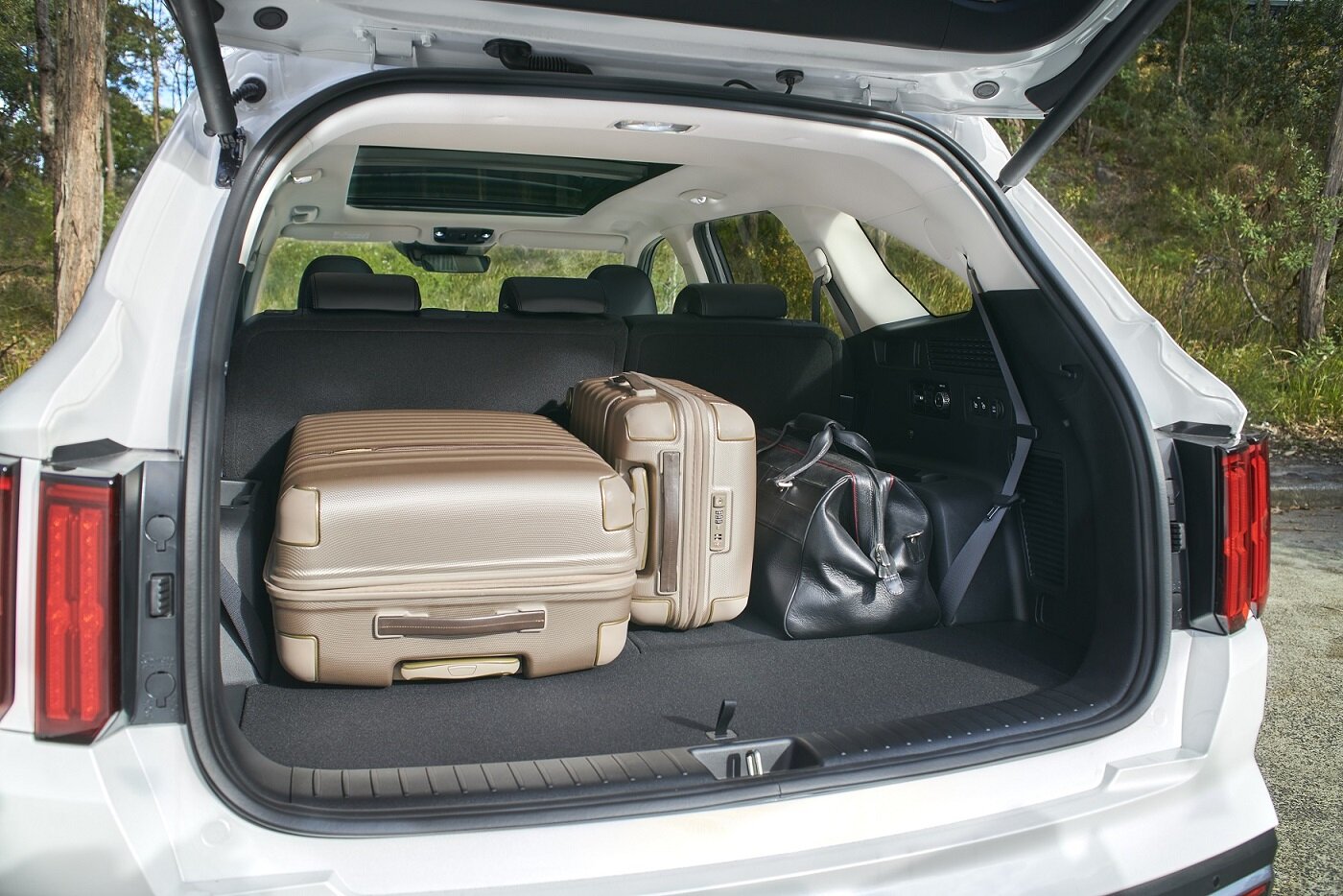
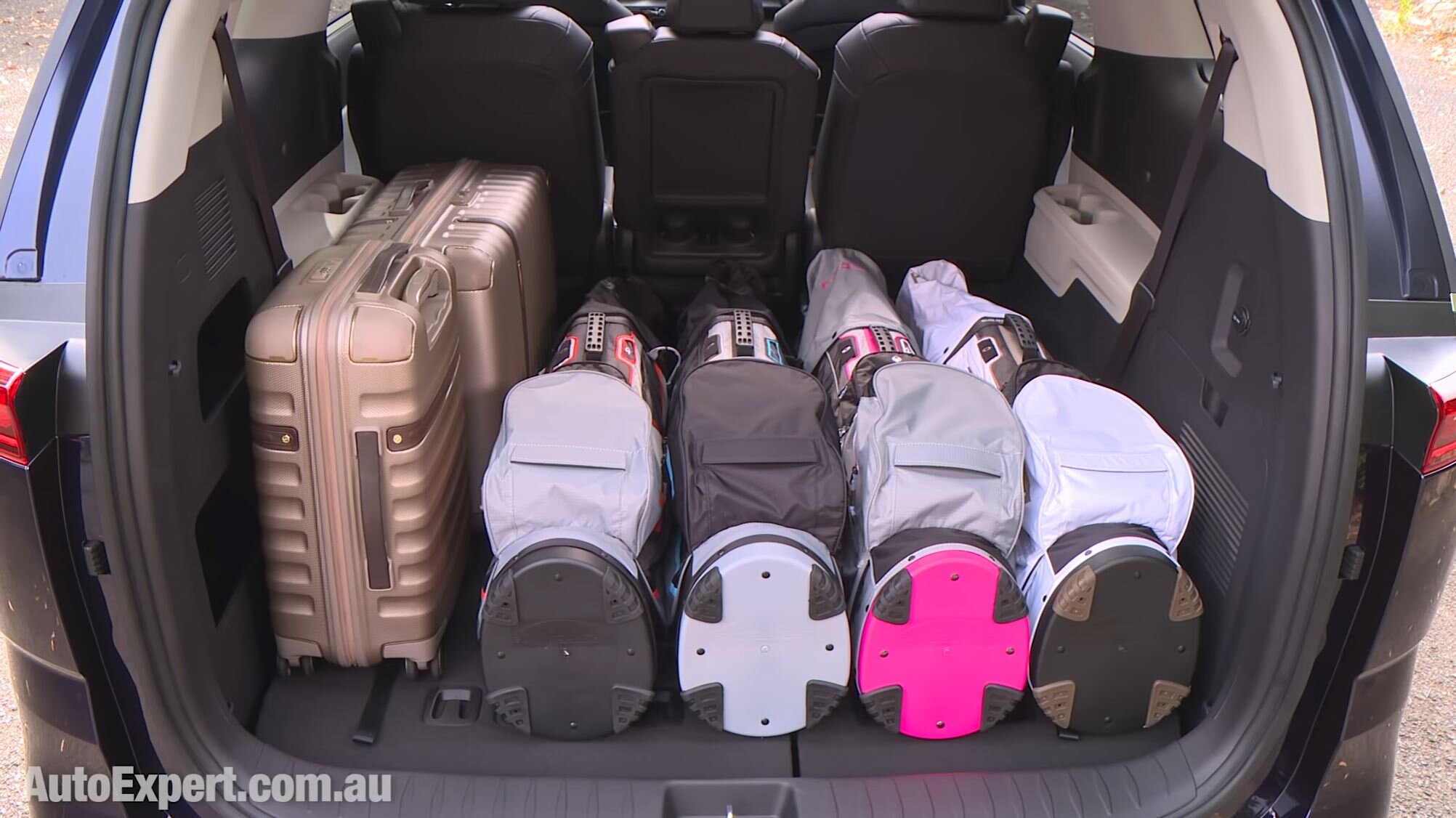






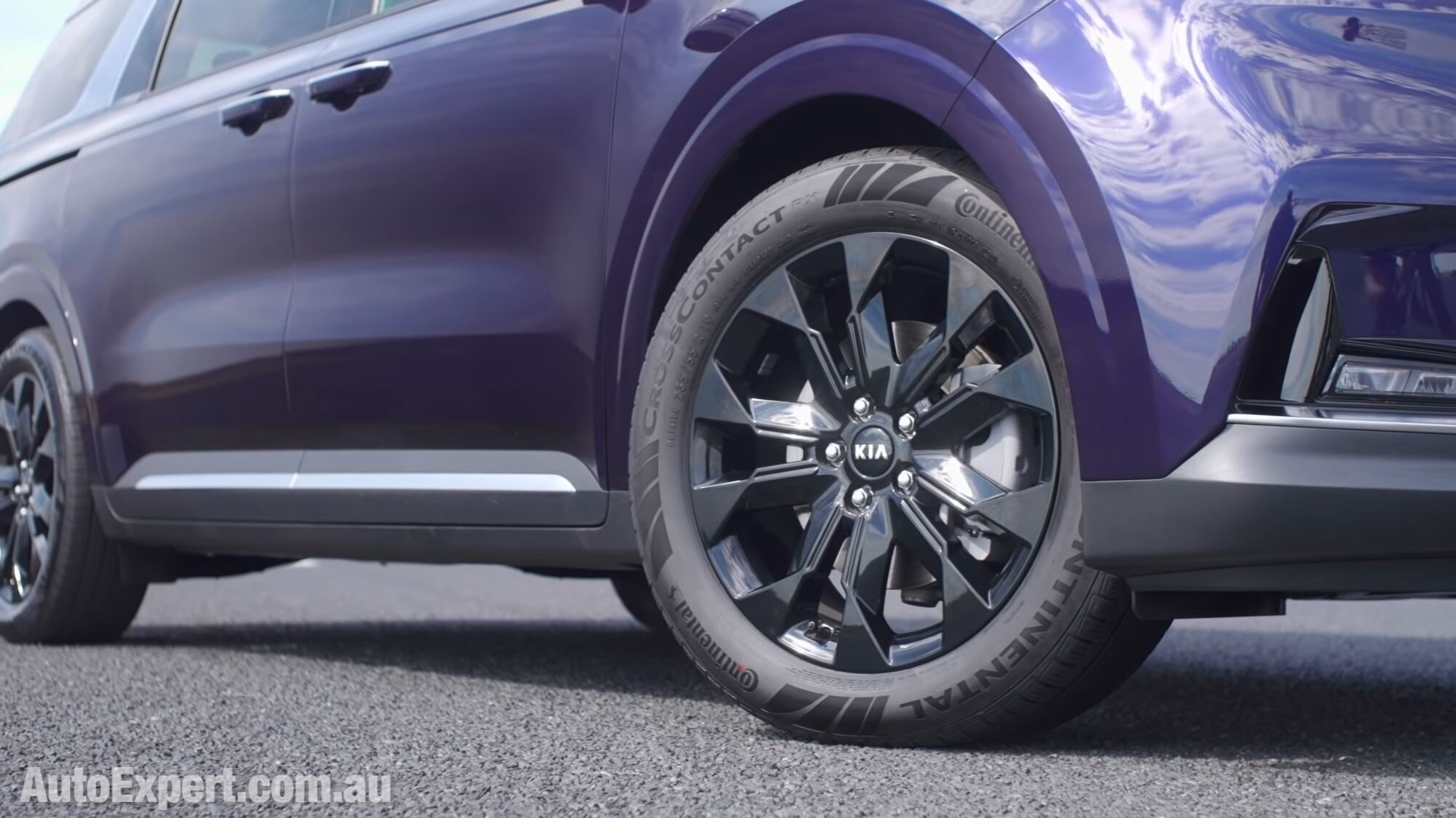
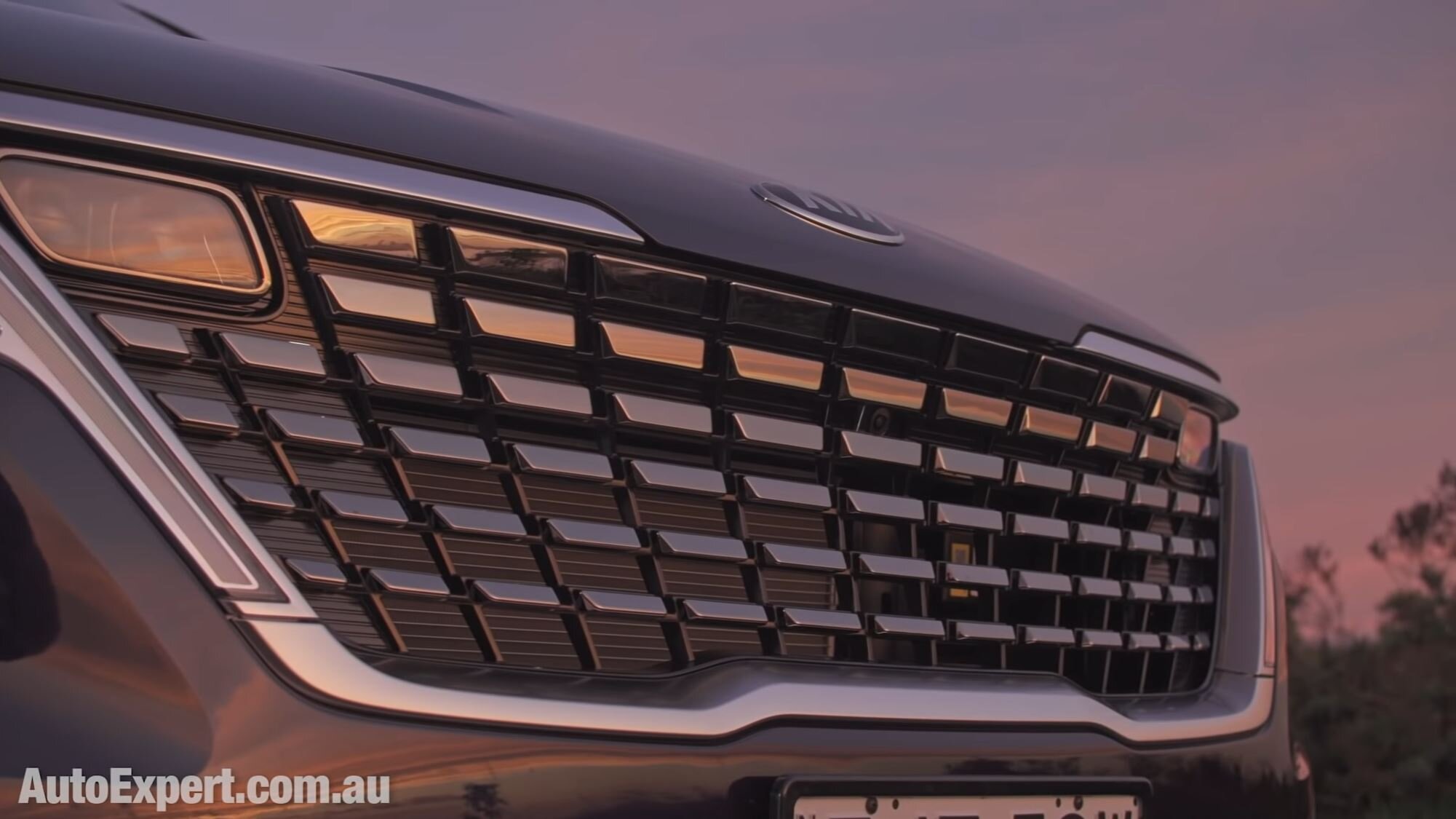
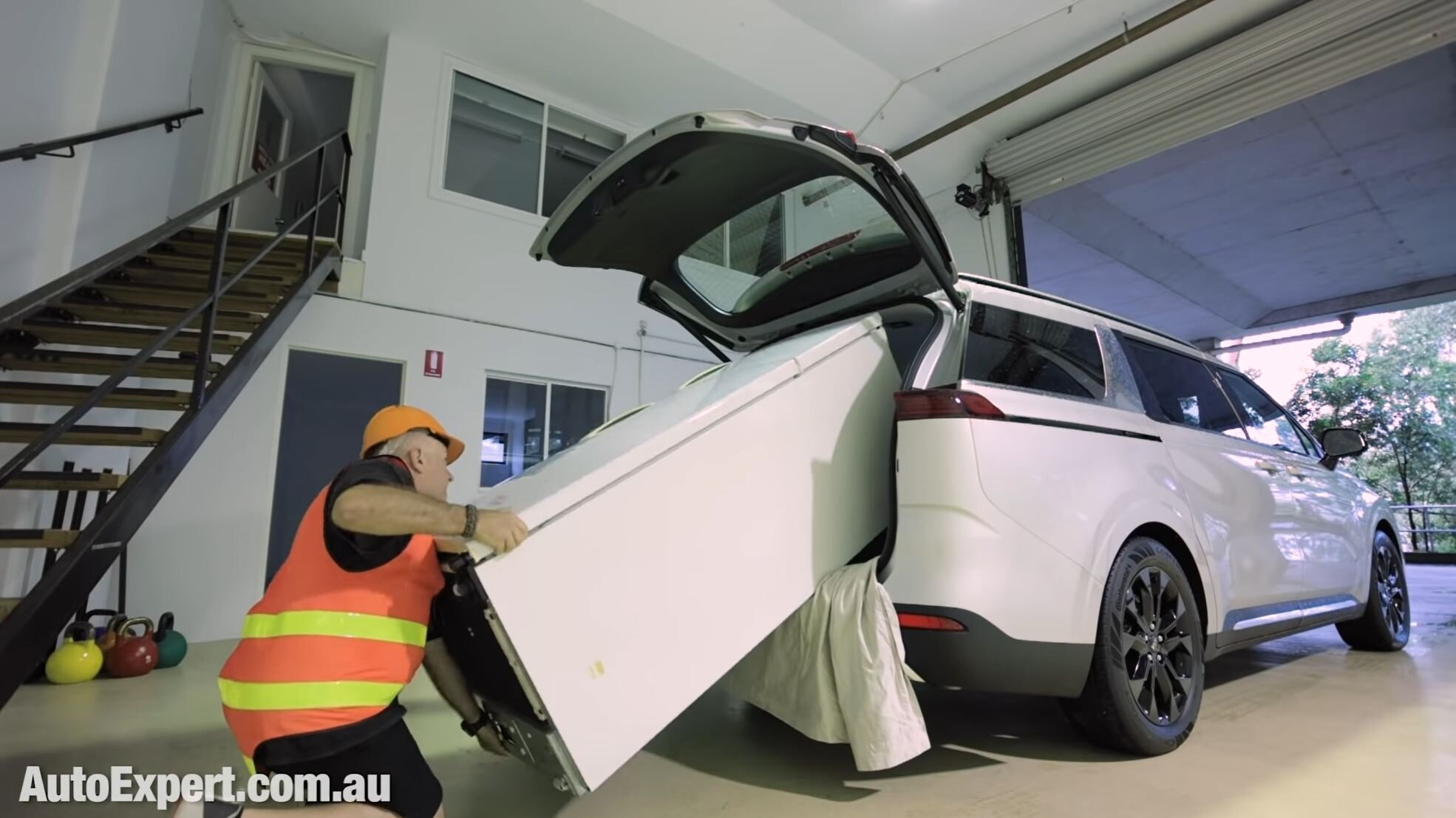

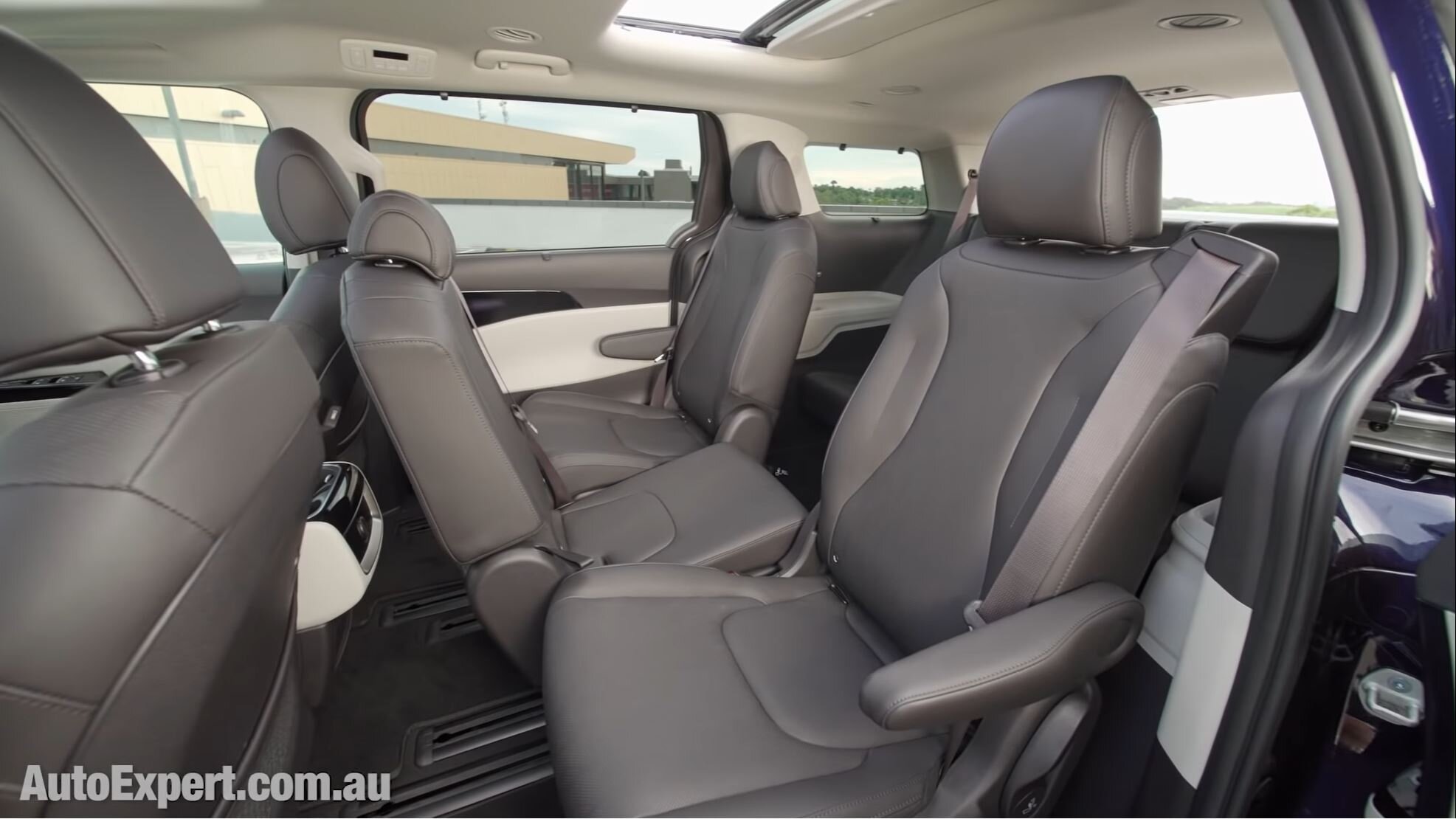
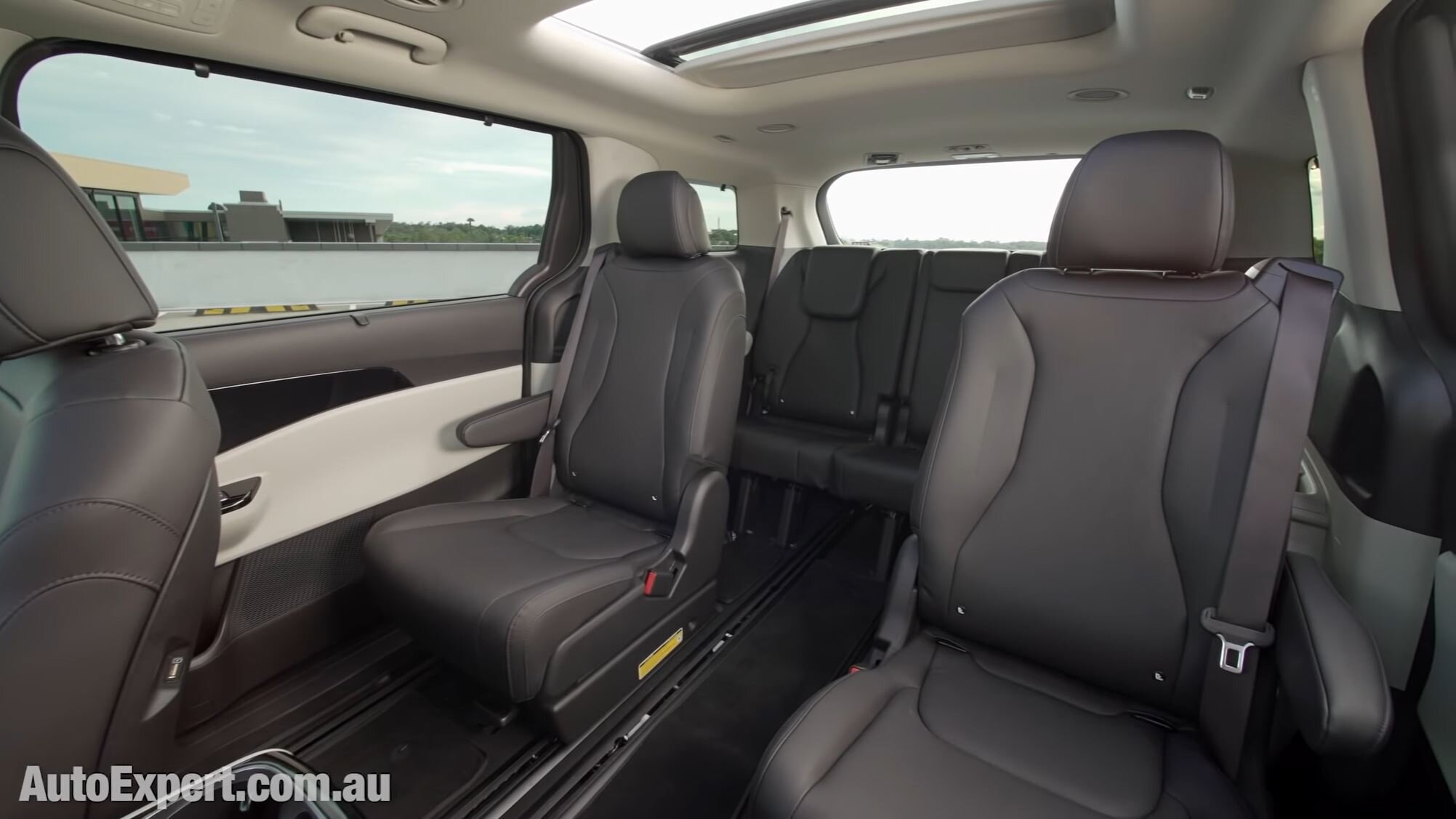




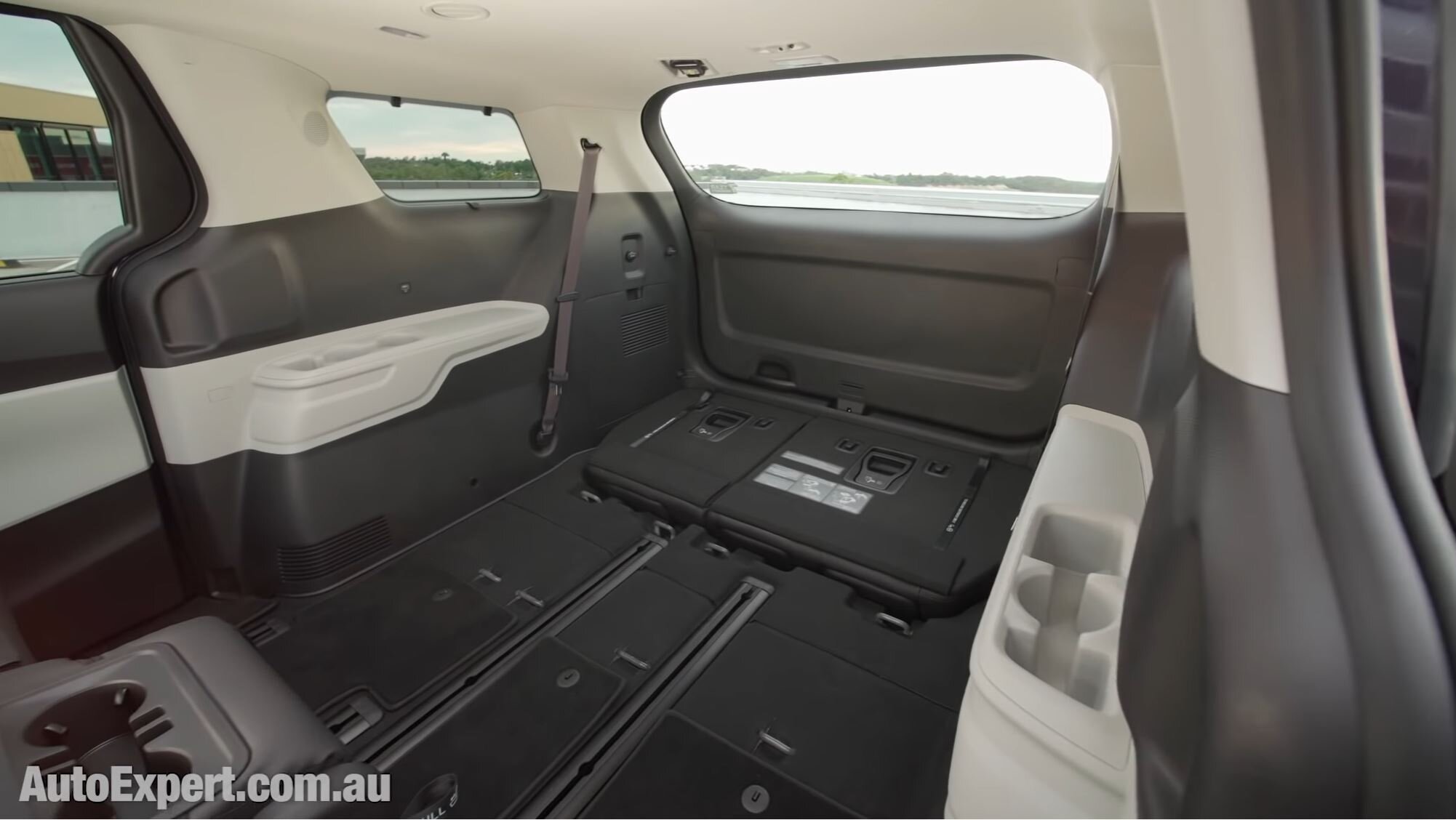
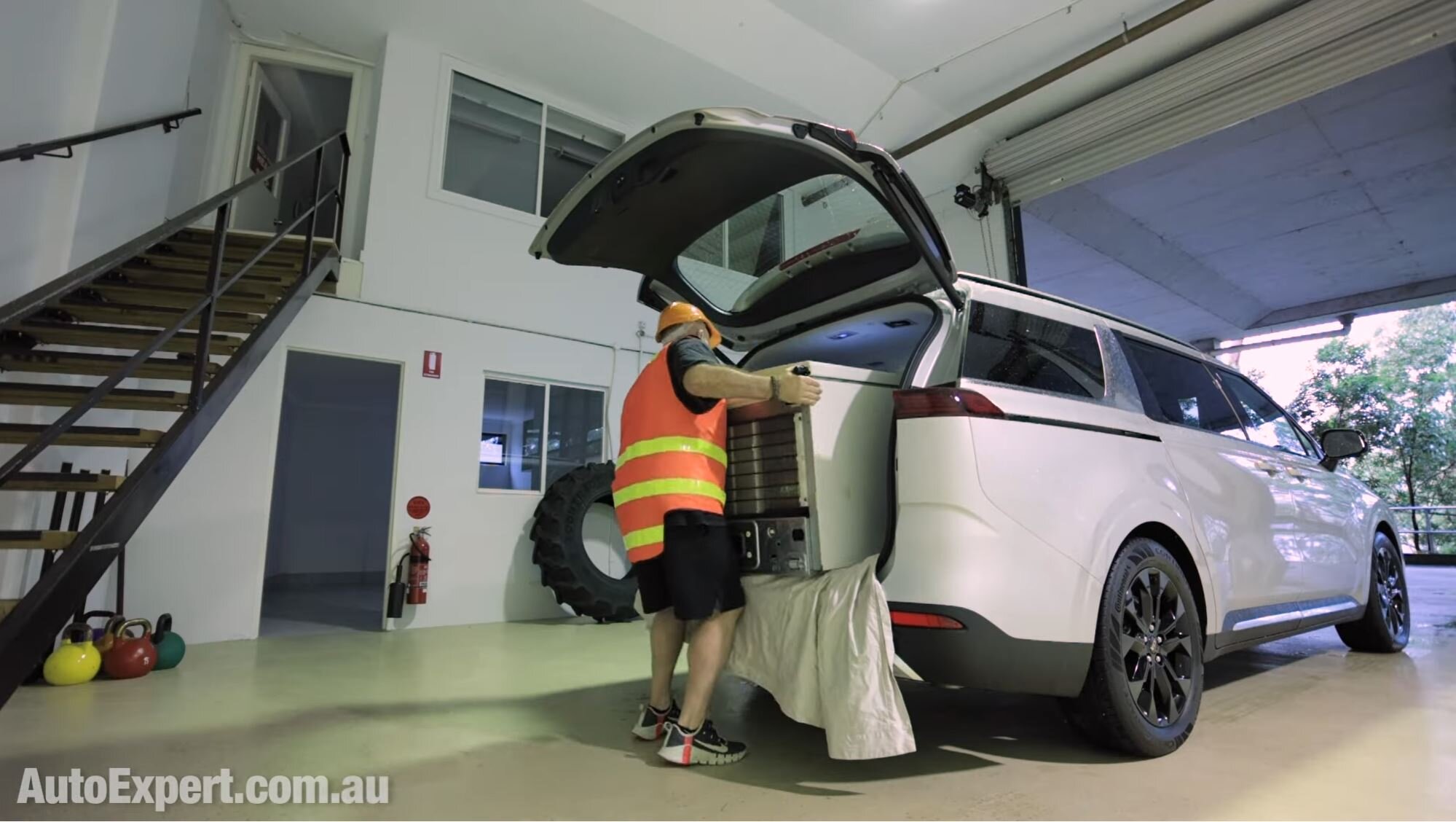

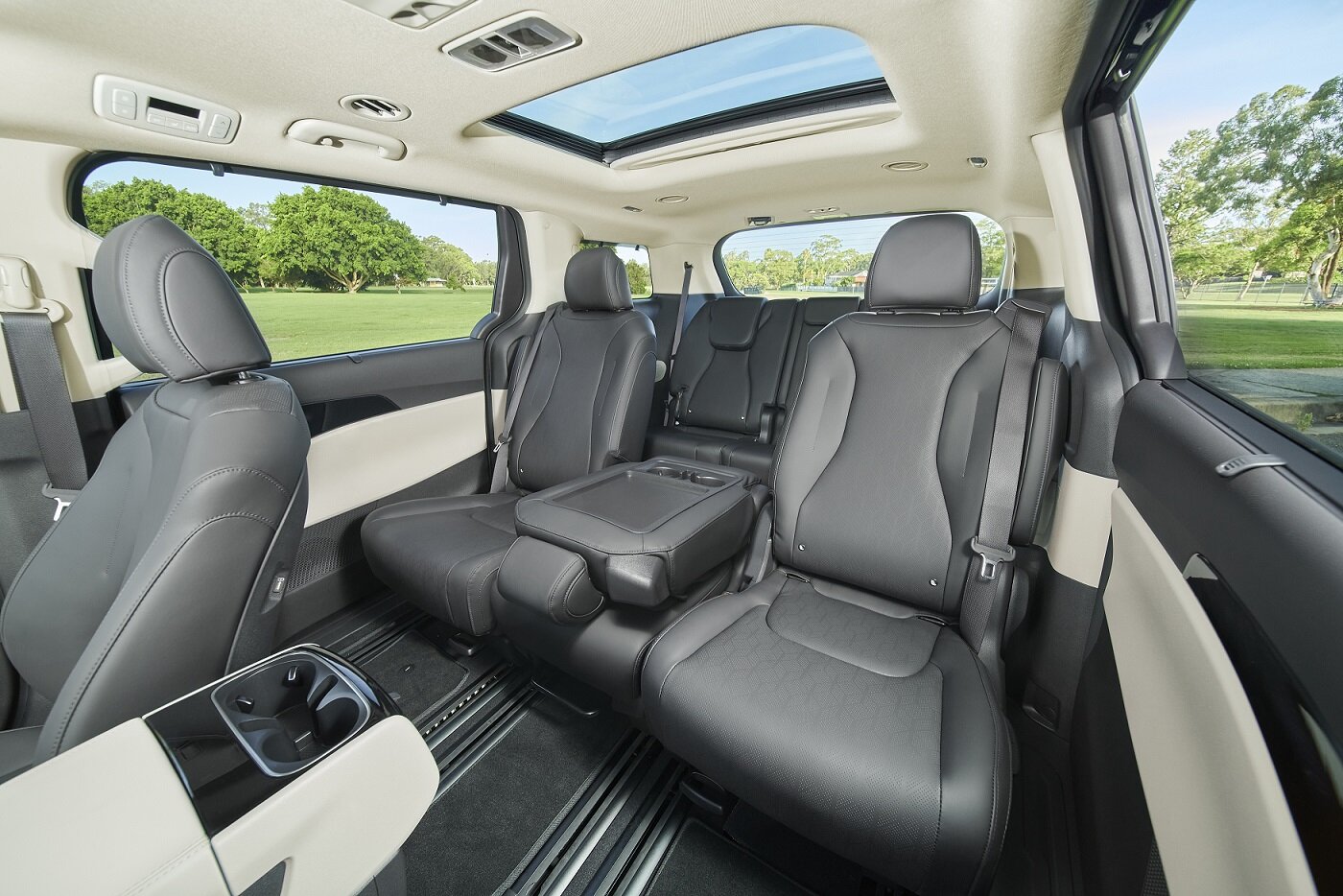


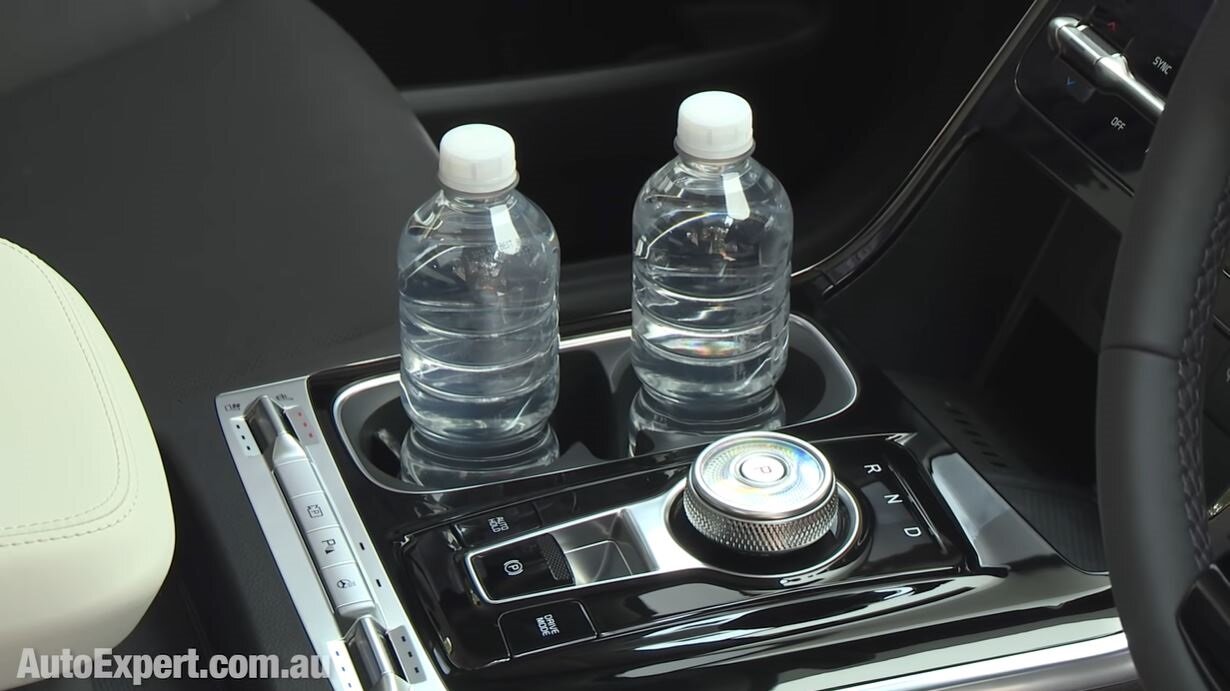


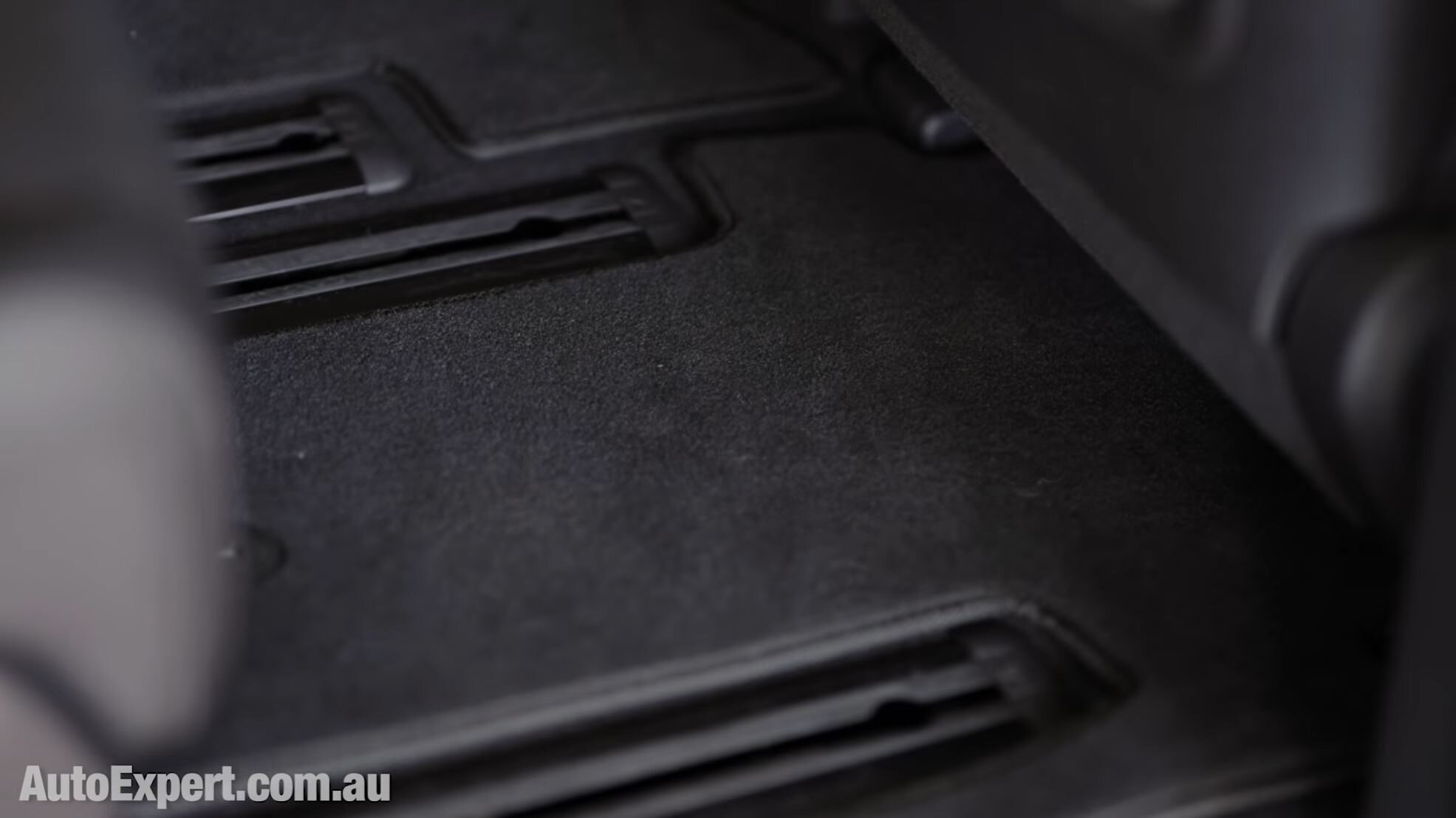



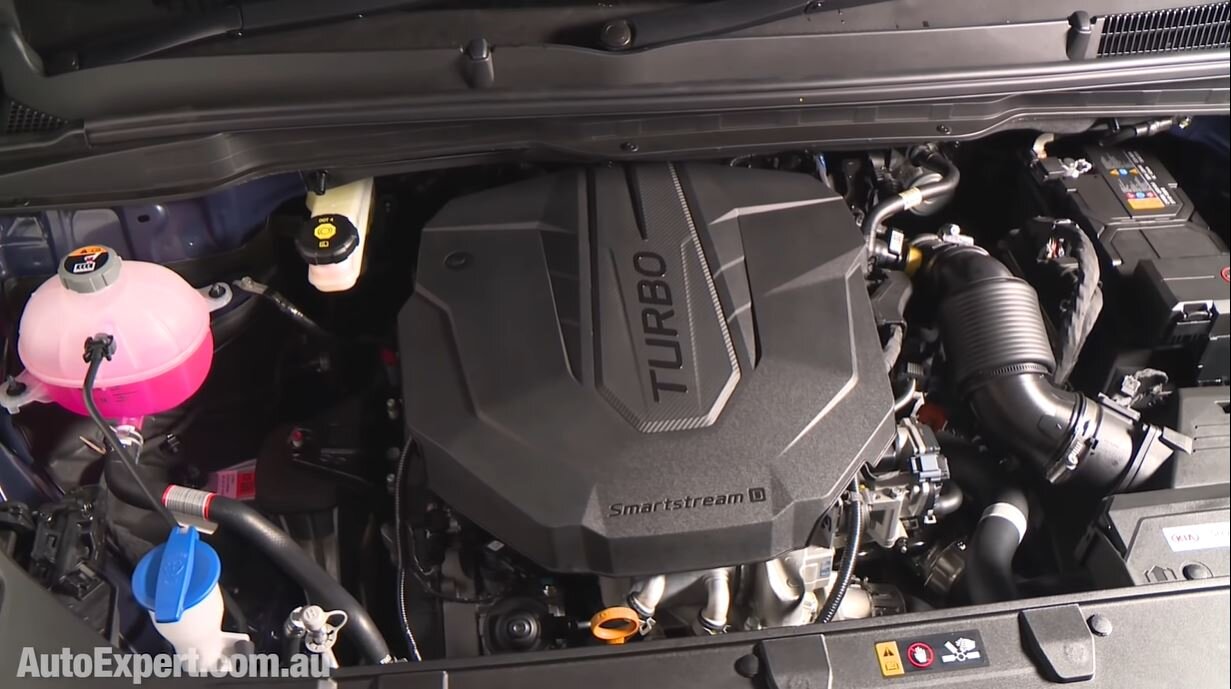
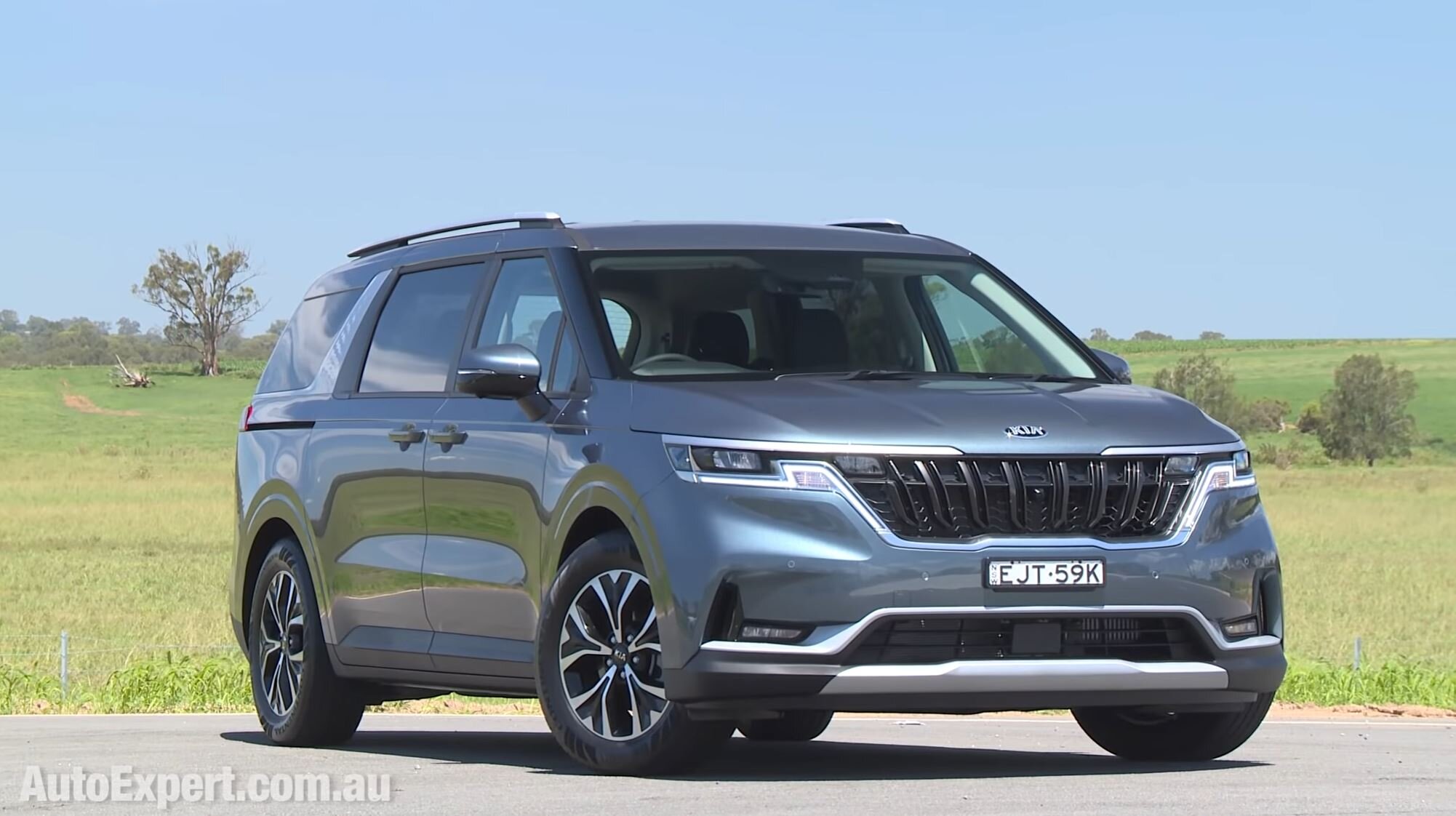





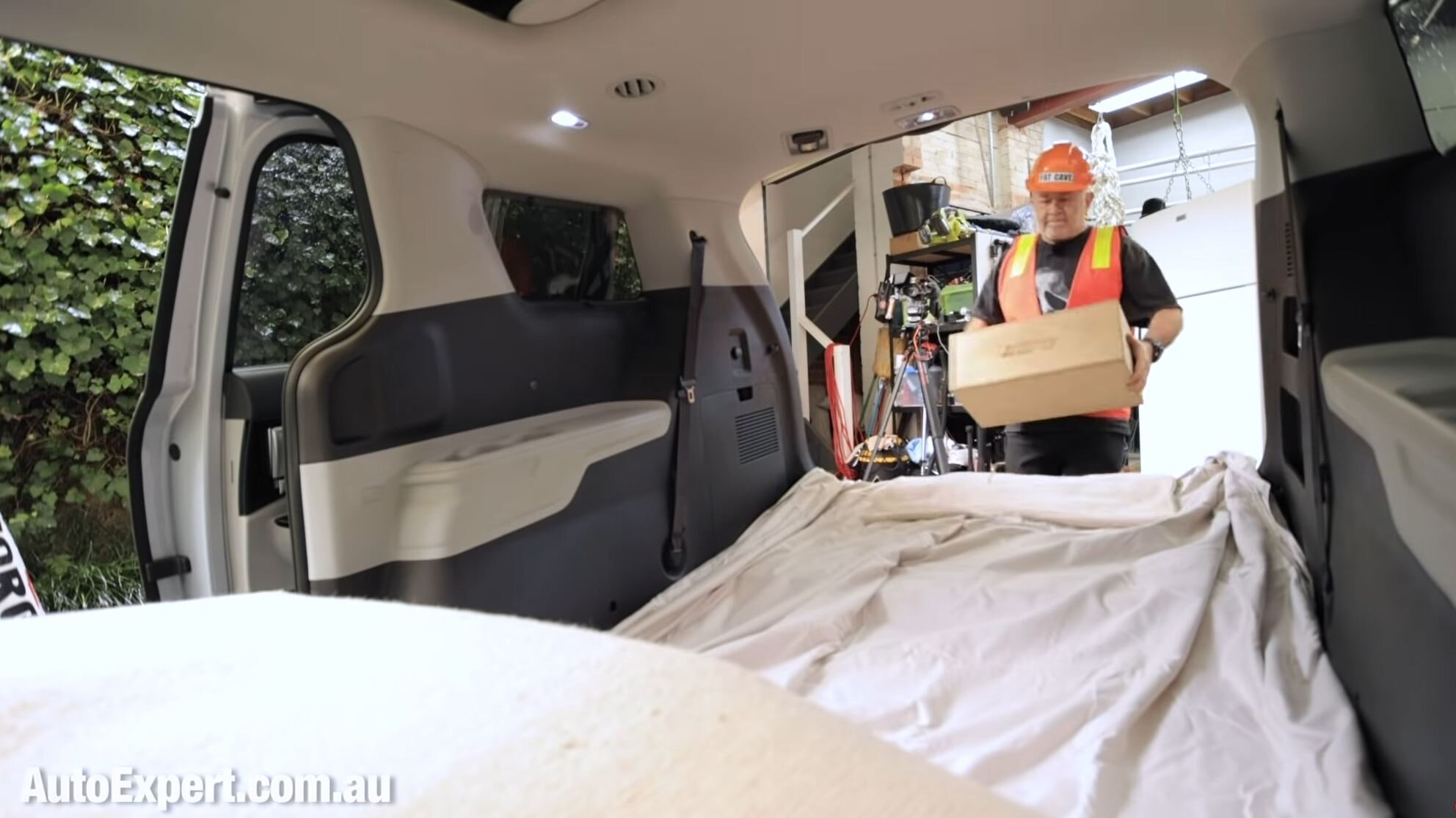


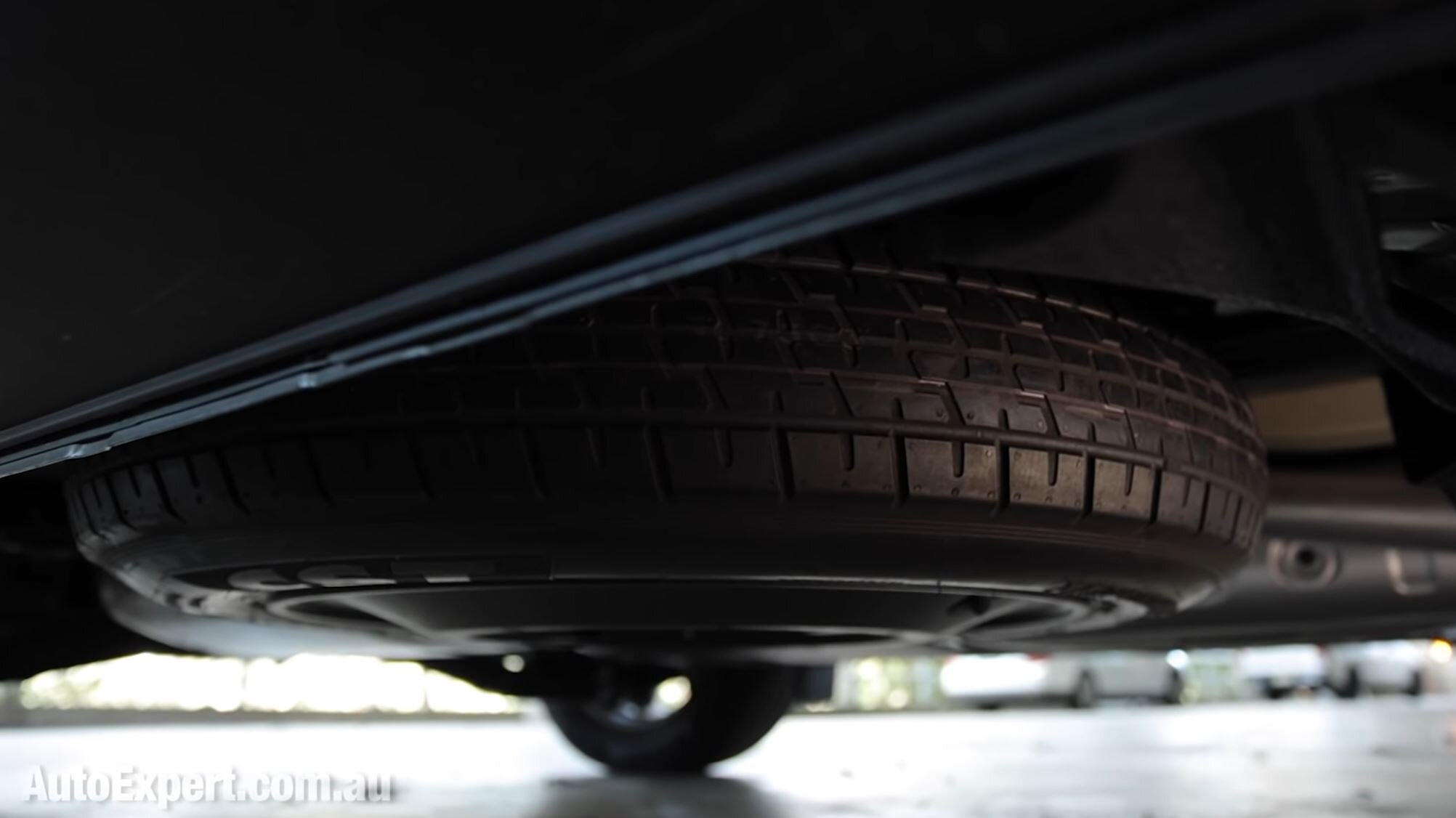


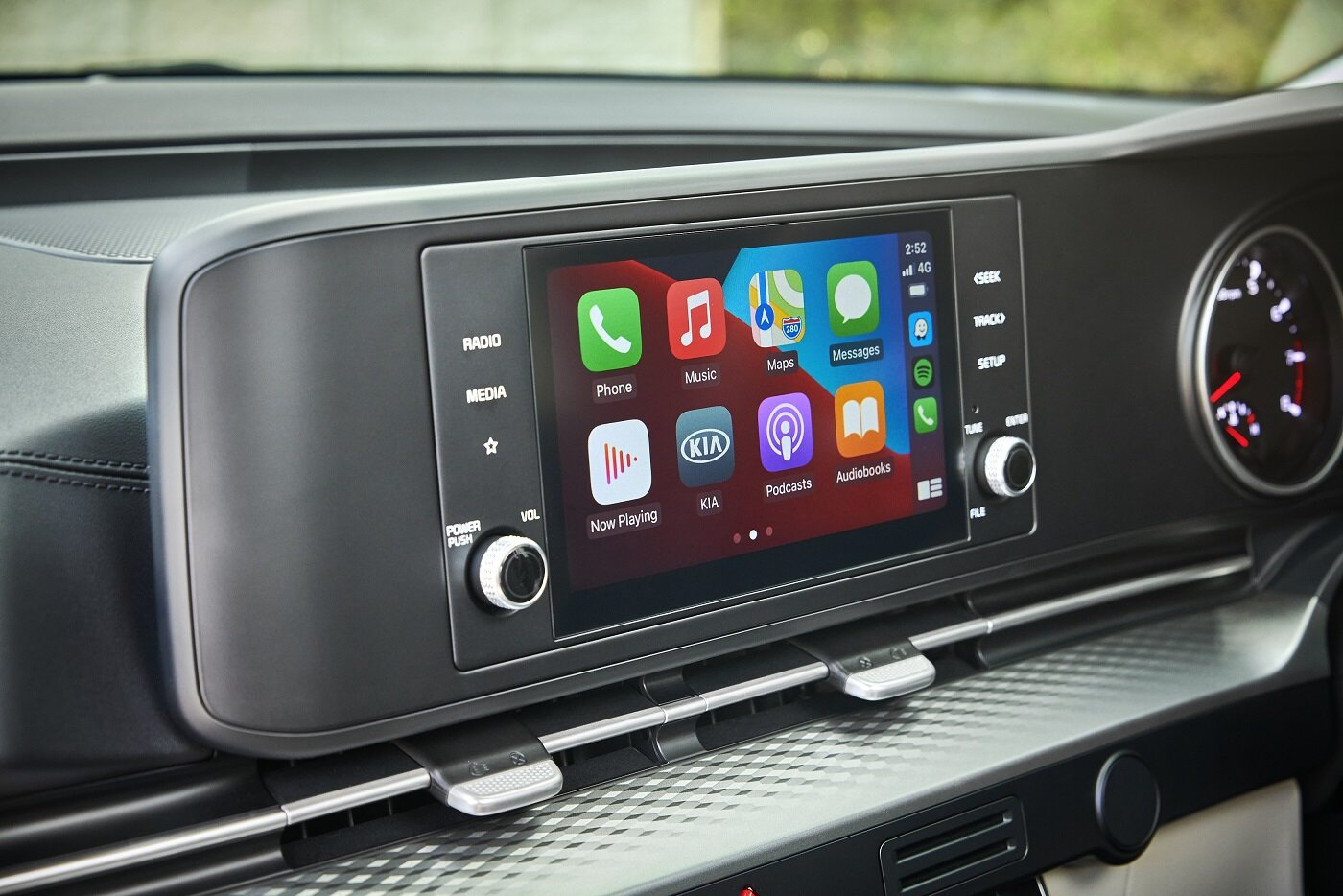
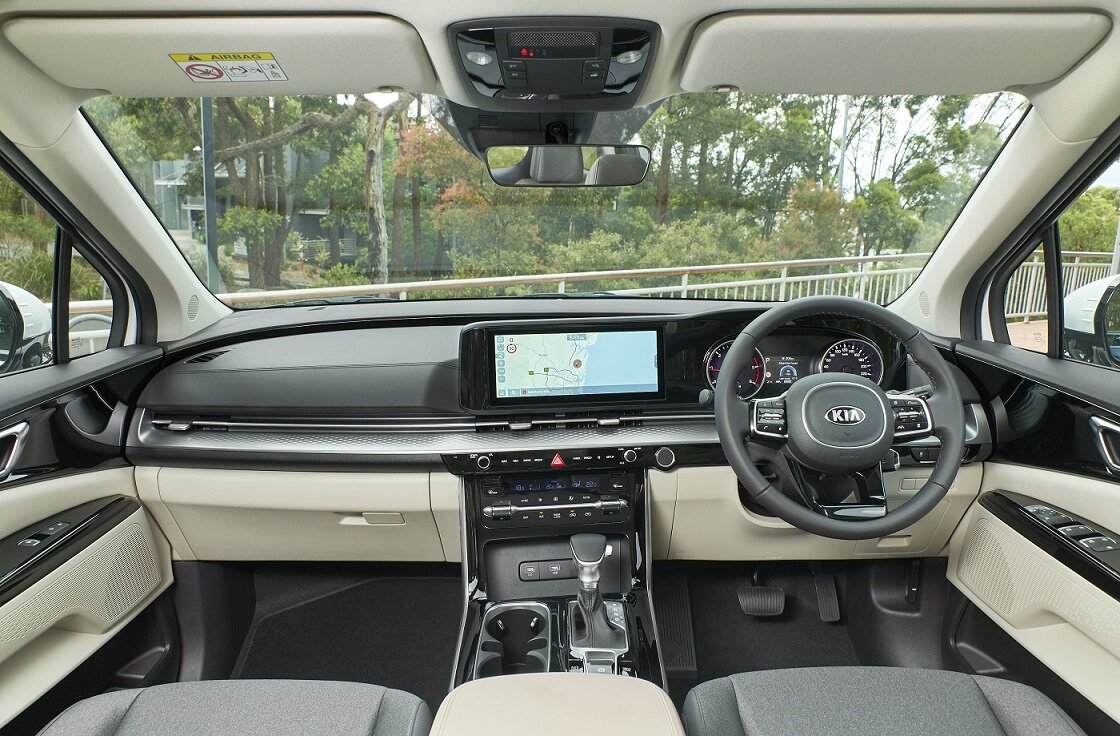

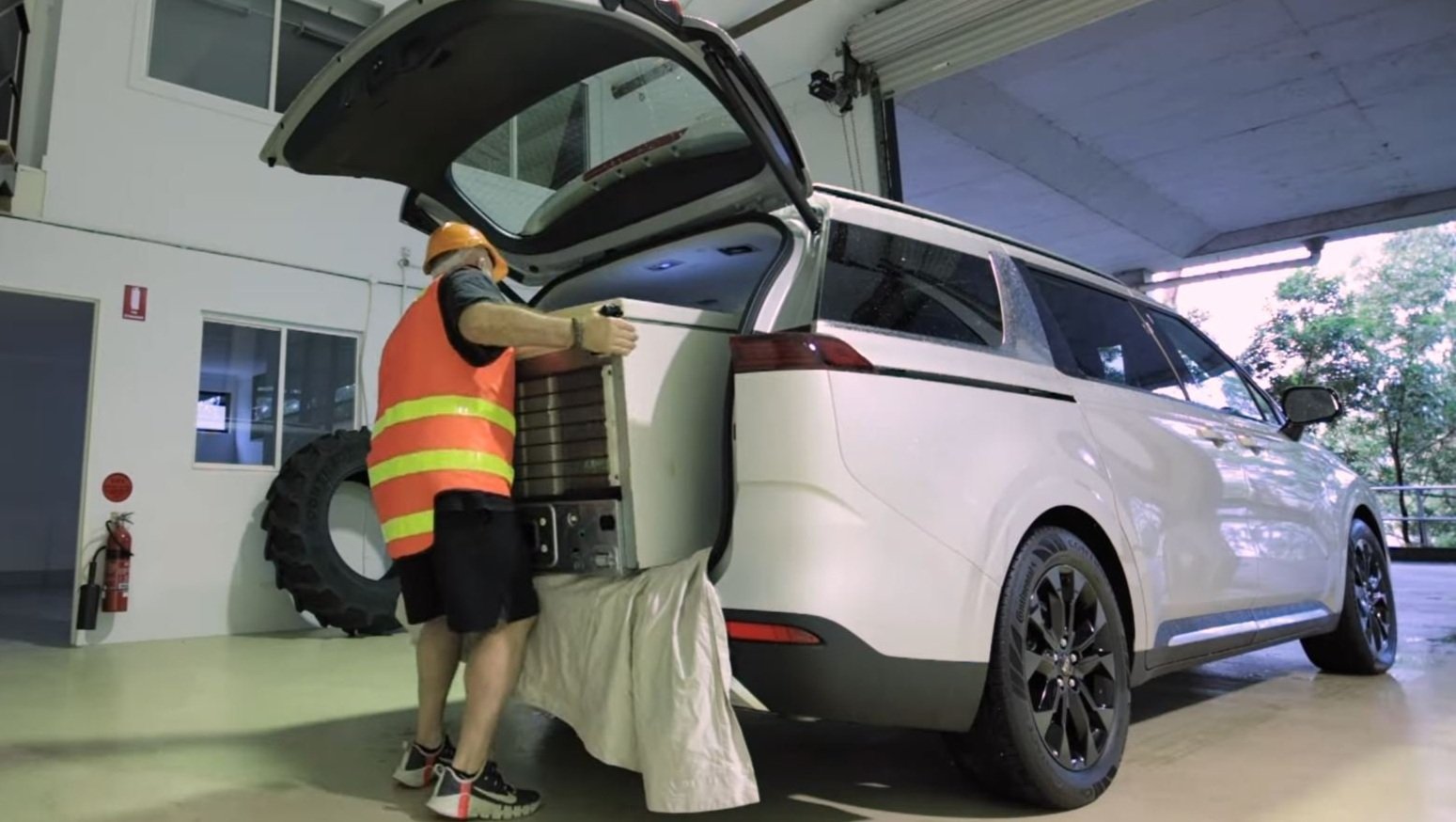









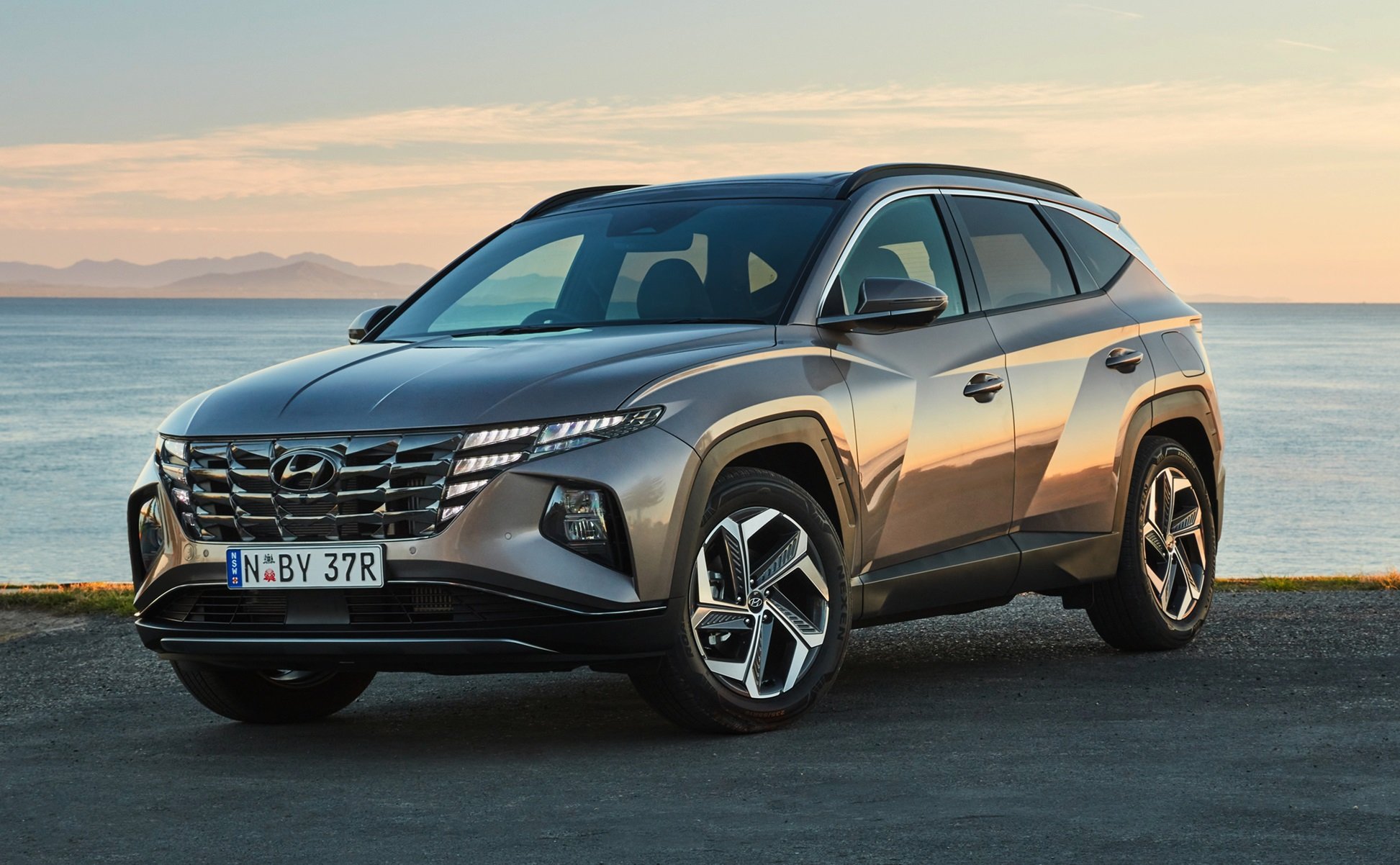

Toyota RAV4 is the best-selling medium SUV in Australia, offering good resale value and envious fuel economy. If you need an enormous boot and a simple, functional family vehicle, RAV4 is hard to beat.